My road trip around Namibia is the best travel experience I’ve ever had.
Hands down.
I can’t even find the words to describe how fantastic my time in the country was. Namibia has everything. It’s easy to explore independently, it’s safe, it’s beautiful, the locals are lovely, the landscapes are diverse, the wildlife is exciting, and there are so. few. tourists.
I’ve got a dozen posts planned about my time in this amazing country, so brace yourself for an onslaught of information! By the end of the month, you’ll have everything you need to book a trip to this kickass country. And hopefully you’ll decide to do exactly that.
This is what it’s like to travel in Namibia.

Namibia Travel Guide
Where is Namibia?
Let’s start off with a little bit of context. Where even is Namibia?
Namibia is a Southern African country on the west coast of the continent. It’s located above South Africa, below Angola, and to the west of Botswana.
Interestingly, Namibia is where you’ll find the world’s only quadripoint, which is defined as the place where the corners of four different countries meet. Yes, in the far north-eastern reaches of this country, Namibia nestles up against Botswana, Zambia, and Zimbabwe. There are over 150 tripoints in the world, but only one quadripoint, making this a very special place on the planet.
Unfortunately, it’s in a part of the country that few tourists choose to visit, at the eastern end of the Caprivi Strip, which is isolated from many of the main tourist activities. Somewhere that’s much easier to visit, however, is the Tropic of Capricorn! Most visitors end up driving past the iconic Tropic of Capricorn sign while driving around Namibia, and fortunately, it’s marked on Google Maps, so you won’t have to worry about missing it.
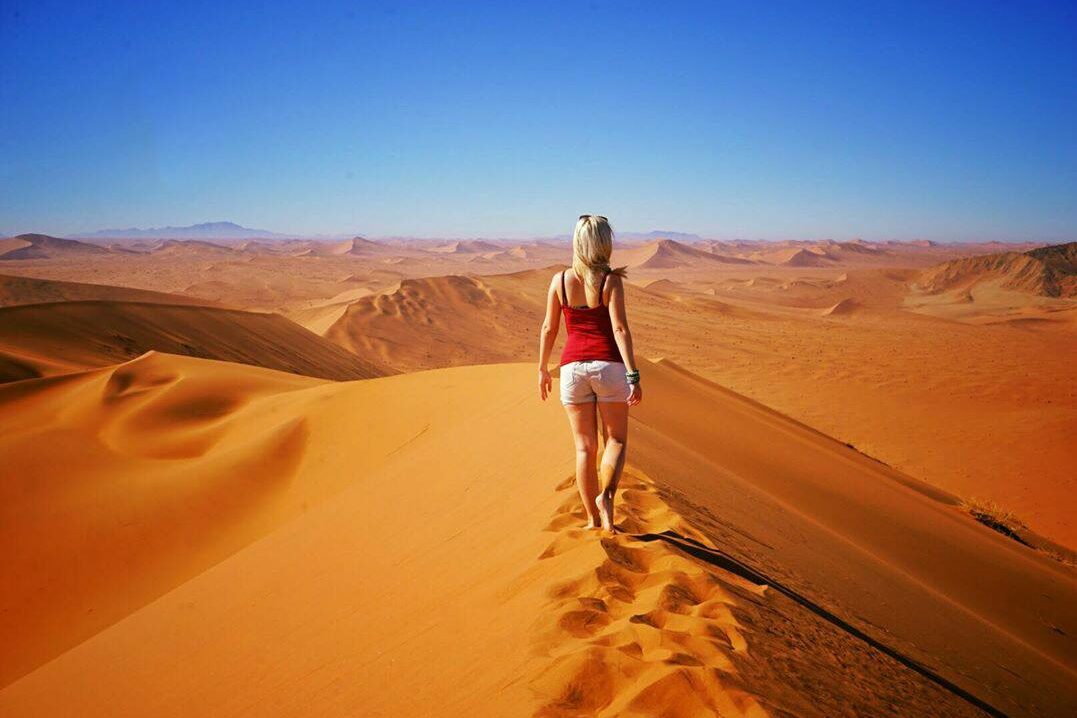
Namibia is the Perfect Introduction to Africa Travel
If you’re dreaming of travelling in Africa but have no idea where to go first, head to Namibia. It’s one of the safest and least intimidating countries I’ve travelled through.
One of my aims with my recent Africa travels has been to prove you can easily travel around much of the continent independently. So many people opt to jump on overland truck tours in this part of the world, but what I’ve found so far is that it’s really not necessary. And in Namibia you definitely don’t need to join a tour in order to visit.
With the exception of the bad roads, I found it no more difficult or dangerous to travel in than the U.S., Europe, or Australia. And when you’re traveling independently, you’re in control of your schedule and where you stay and what you do.
On top of that, the official language of Namibia is English, which makes independent travel even easier. You can ask questions, you can get directions, you don’t have to mime all the time… it’s all so easy.
Namibia also felt like the safest country in Africa I’ve been to so far. Outside of Windhoek, you really don’t need to worry about much at all. The locals are friendly and welcoming, theft is rare, and your only real concern will be how many flat tyres you’ll end up with on the seemingly-endless gravel roads.
Not only is Namibia safe and easy to travel through, but it also has just as much to offer as other countries in Africa. Head to Etosha National Park and you’ll get to drive alongside elephants, giraffes, lions, black rhinos, and more. You can hit up the Namibian desert for sand dune climbing at sunrise. There are beaches and coastlines full of shipwrecks to explore. The darkest skies in the world are in Namibia, so the Milky Way is always shining brightly above your head at night. Oh, and there’s a ghost town in the middle of the desert. Badass.
In other words: Namibia is the best!
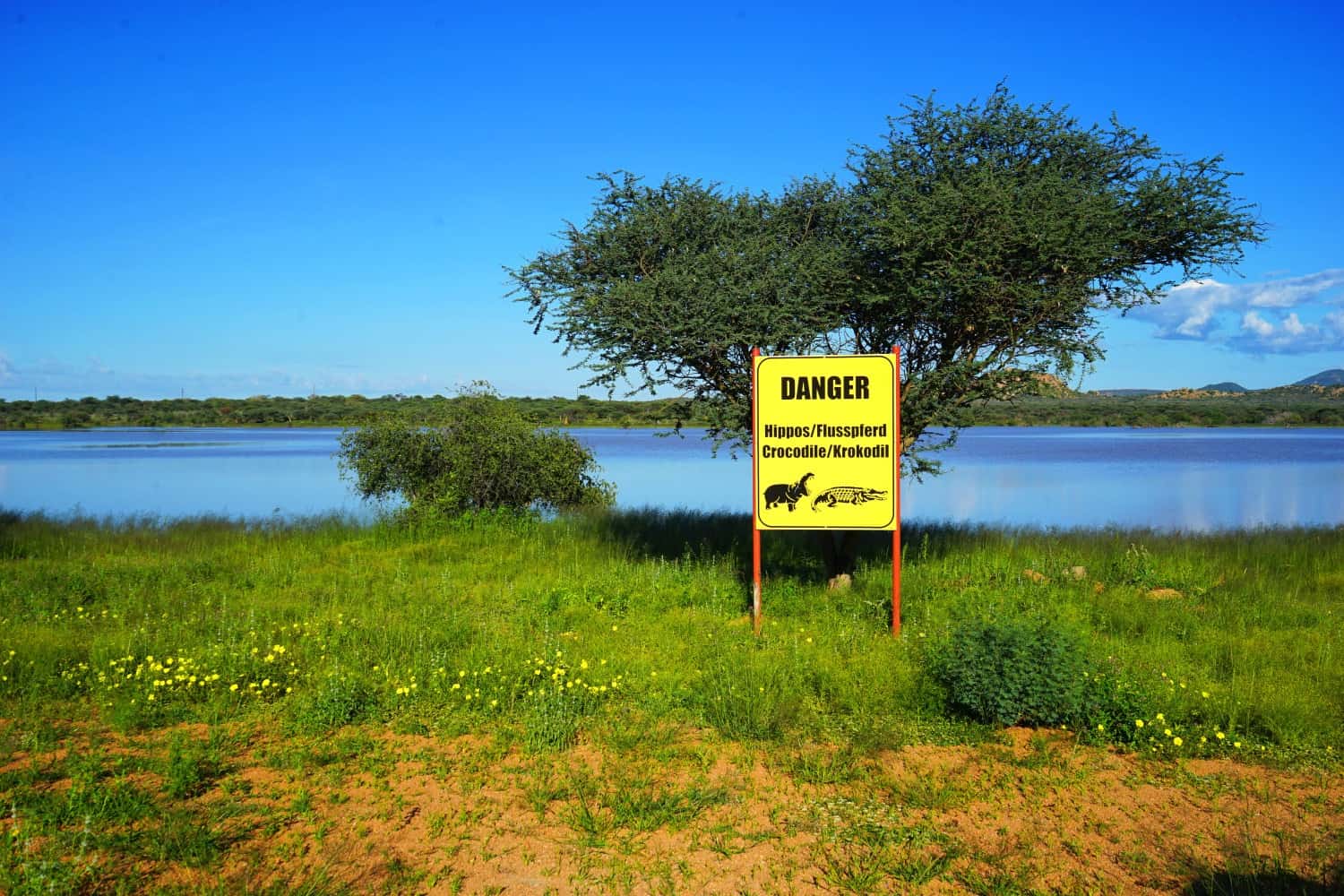
Not Many People Will Know Where You’re Going
I couldn’t believe it: after six years of travel, Namibia was the first country nobody seemed able to locate on a map. In my digital nomad community here in Portugal — so, y’know, people who have travelled full-time for many years — a surprisingly number of people had never even heard of Namibia.
I get it: it’s a country that isn’t often spoken about outside of travel blogging circles, but it was still surprising to be met with blank faces when I spoke about where I was visiting next.
The bonus of this? Hardly anybody decides to visit the country, so there are hardly any tourists around!
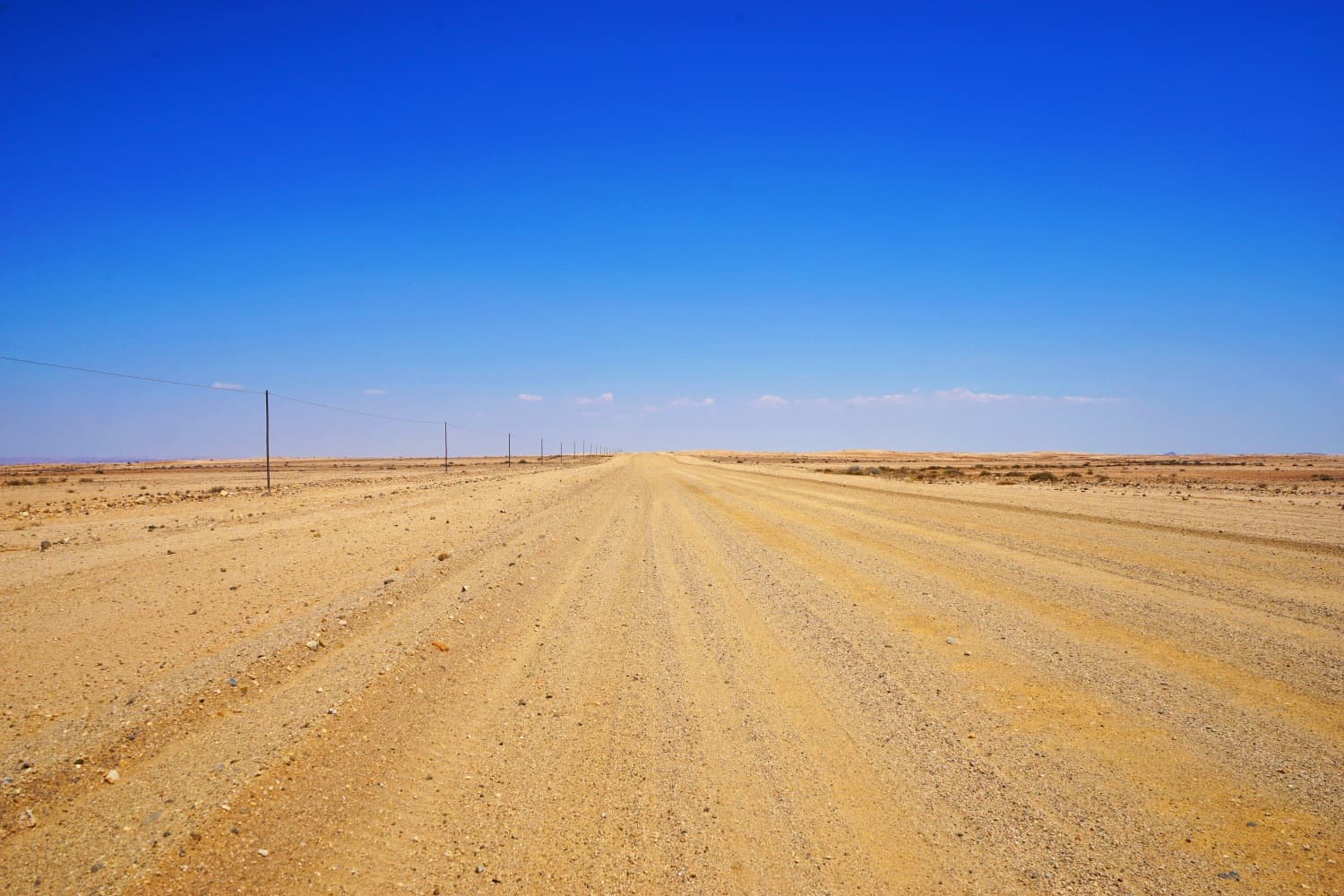
It’s Ridiculously Sparsely Populated
Namibia is the second-least-densely populated country in the world, with an average of just five people for every square mile. And it’s easy to see why: desert takes up the bulk of the country and so outside of its short rainy season, it’s a very arid place.
This was one of my favourite aspects of travelling around Namibia, though: you could drive for four hours straight and not see a single human, car, or building over that time. As an introvert with a love of wide, open spaces, I couldn’t get enough of the isolation.
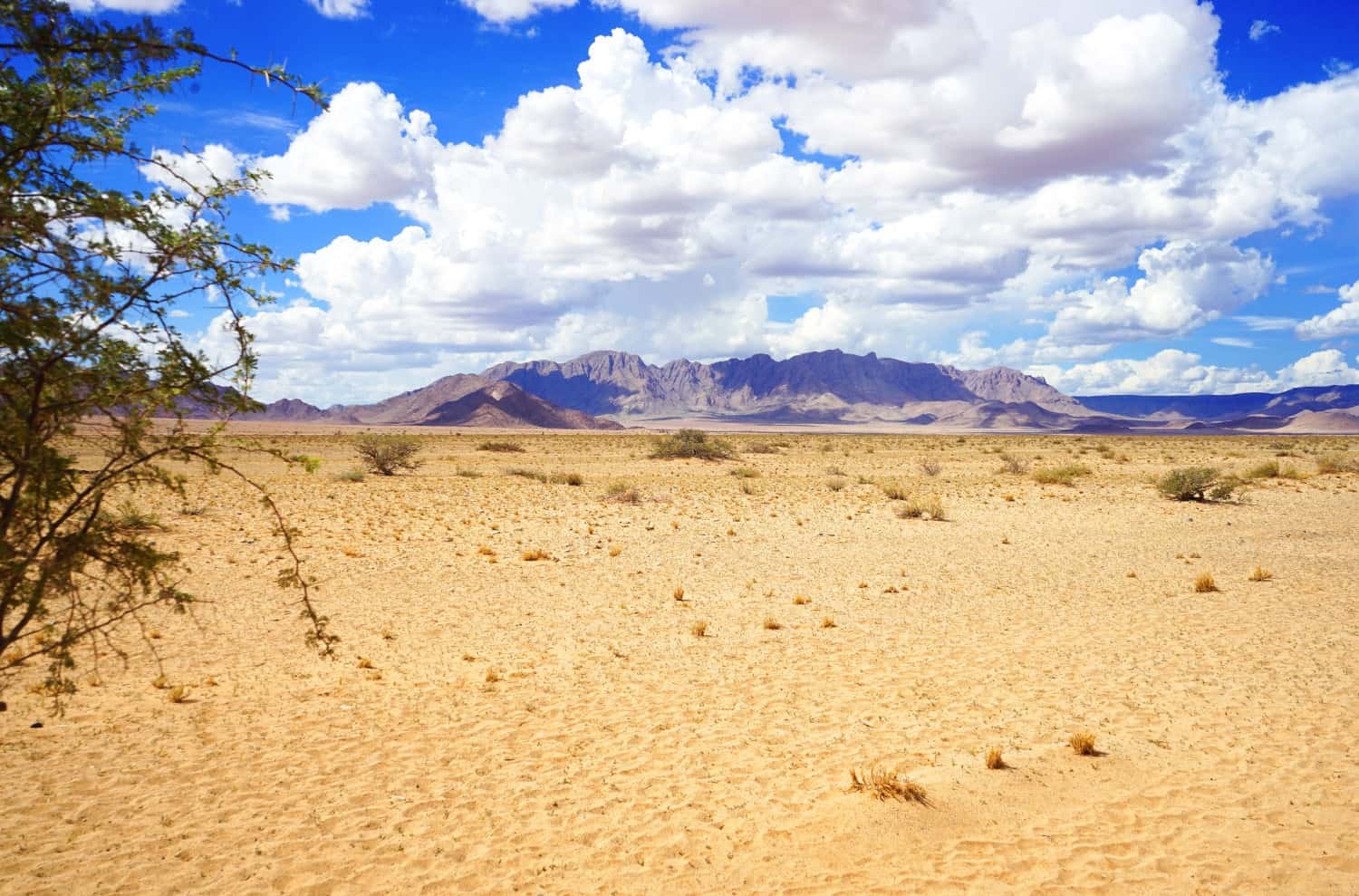
Planning Where to Stay Is… Interesting
Because the country is so sparsely populated, the majority of places you’ll stay at will be lodges that feel as though they’re in the middle of nowhere. Because they kind of are.
There aren’t many major towns and cities in the country — and honestly, the best parts of Namibia are outside of them — so that makes finding accommodation tricky. The best places to stay at are often hours from the nearest signs of civilisation and miles down a tiny gravel path.
I found booking.com best for finding places to stay. First, decide on which major destinations you want to hit in Namibia. For us, this was: Windhoek – Etosha National Park – Swakopmund – Sesriem – Luderitz – Windhoek. Most of these destinations are so far from each other that you’ll have to break up the drive into two days.
Next, on Booking, search for all hotels in Namibia, and once you’re on the search page, click on view on map. Once you’ve got a map view of every hotel listing in Namibia, zoom in on the route you’re planning to take and see which lodges pop up close to the midpoint between two distances. We did this for almost everywhere we stayed in Namibia and found some incredible lodges as a result. In fact, some of the highlights from my time in the country were getting to stay outside of the main tourist trail.
And if you can’t find anything suitable or affordable on the drive, just googling “where to stay between Swakopmund and Sesriem”, for example, will bring up a ton of forum threads with recommendations from other people. Not everywhere is listed online, so there were a few places we had to book through email.
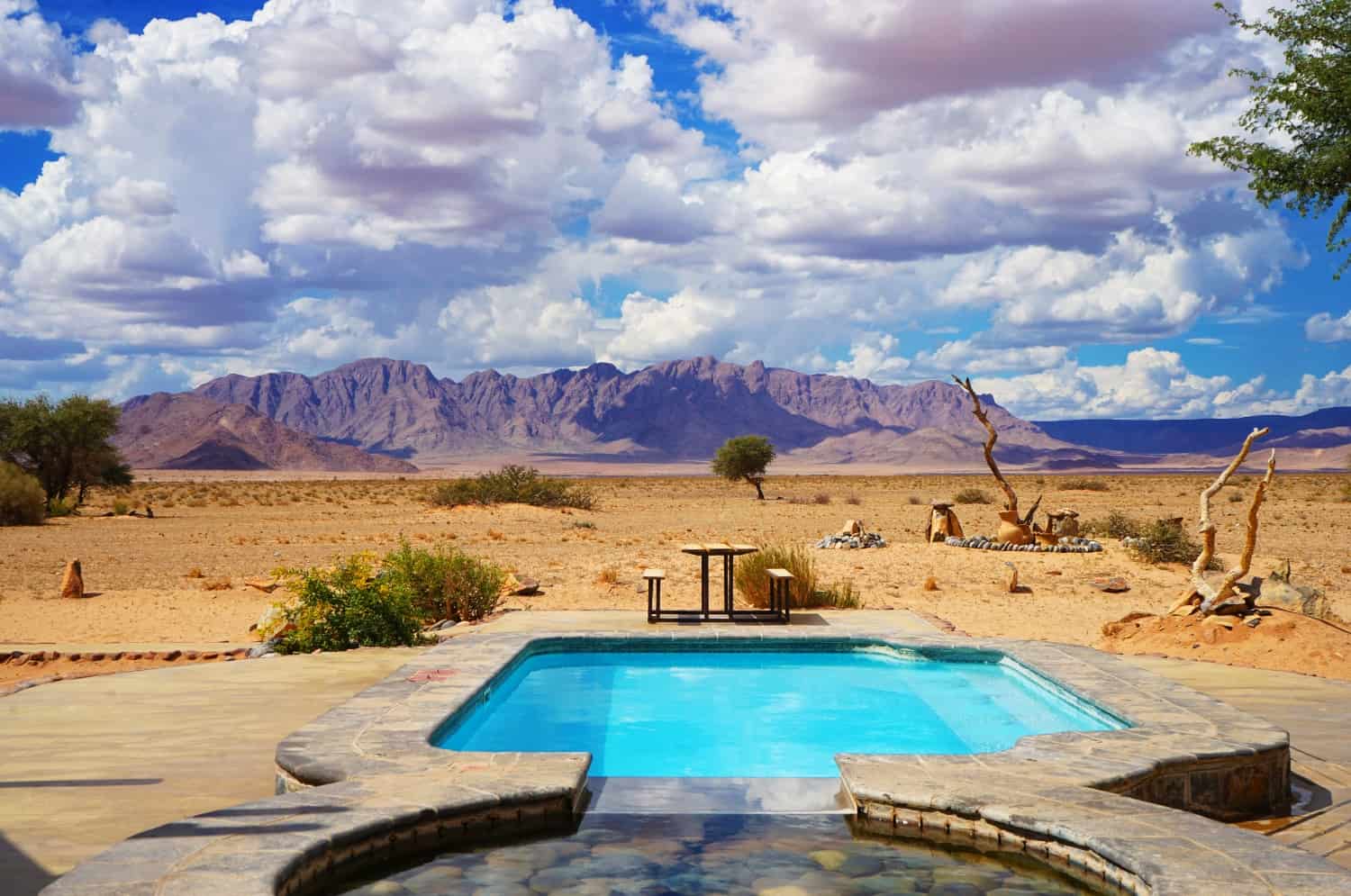
Frustratingly, It’s Tough to Visit on a Budget
In Namibia you have two options: expensive or camping.
I’m all about that budget travel life, but in Namibia I had to give up my aim of spending $50 a night on accommodation and quadruple it for much of our trip. Yep, almost every lodge we stayed at in Namibia was well over $100 a night, and we were nearly always booking the cheapest option we could find. And we were visiting in low season, where accommodation prices are around half what they’d be in high season!
Unfortunately, if you want to save as much money as possible on your trip, your only real option in Namibia is to camp. Most lodges will offer a camping option for around $30 a night, so if you’ve got your own gear, this is an easy way to save money on accommodation.
The only exceptions to the crazy prices are the cities: Windhoek has cheaper options ($50 a night), and so did Swakopmund ($40 a night) and Luderitz ($50 a night).
Everything else wasn’t too bad when it came to price. Our rental car — a Toyota Corolla — had us up for $30-a-day, which is pretty standard for most countries around the world. Activities and entrance fees (around $6) were also affordable. Food could get a little pricey at the camps and lodges, which made sense because they were so isolated, but nothing was over-the-top extreme. We’d usually pay around $10-15 for dinner each night.
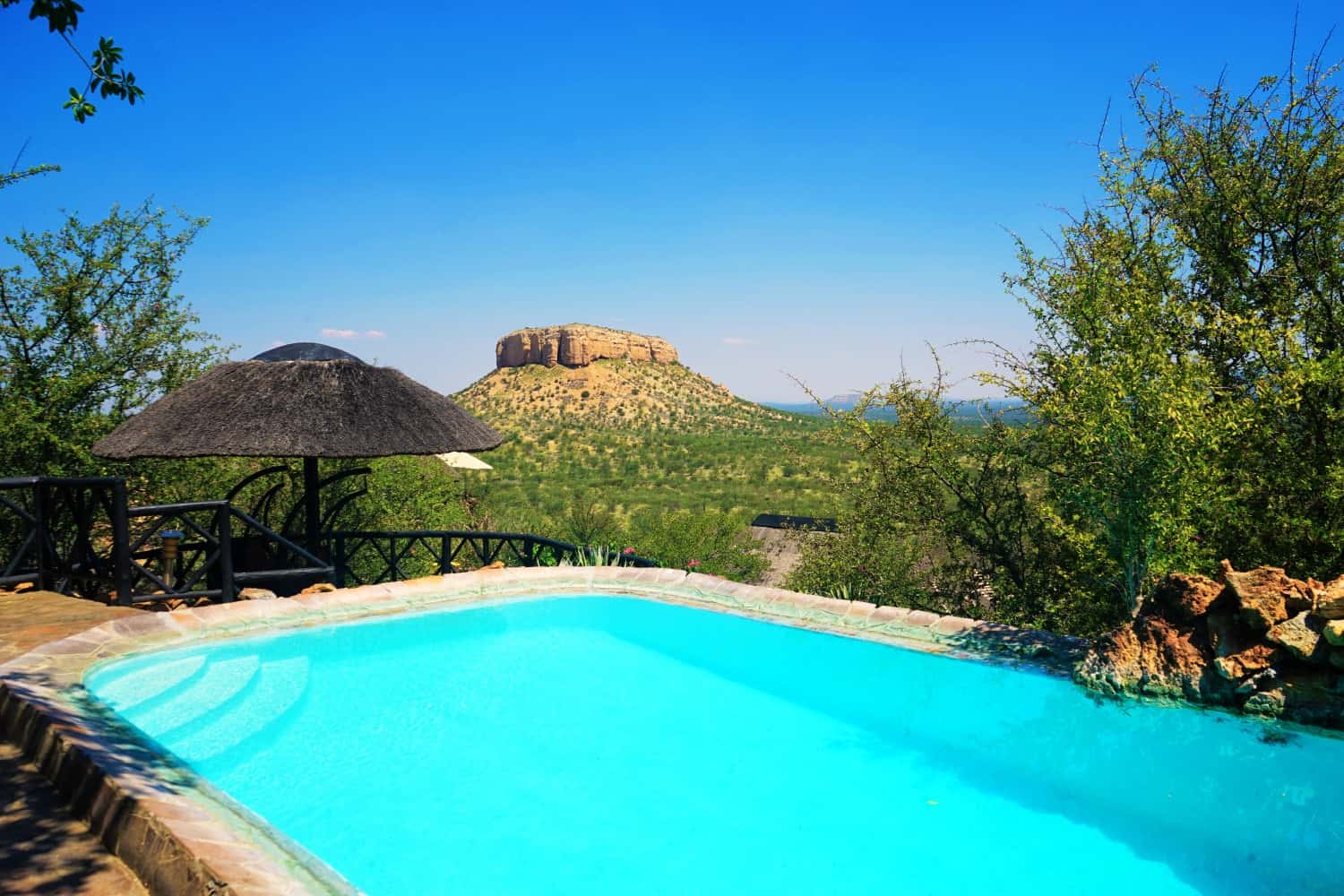
But the Lodges are Amazing
Some of the best hotels I’ve ever stayed in are in Namibia. And while you’ll pay a lot for them, they’re worth every penny.
At Ovita Wildlife Restcamp, we fell asleep listening to hippos in the lake outside our room. At Vingerklip Lodge (pictured above), we ate dinner on a towering cliff top, looking over Namibia’s version of Monument Valley. At Sesriem Desert Camp (pictured above Vingerklip Lodge), we slept in luxury tents in the desert with wild oryx roaming outside.
I loved every single place we stayed in in Namibia, and even though they were ridiculously expensive, it felt as though we were still receiving fantastic value for money.
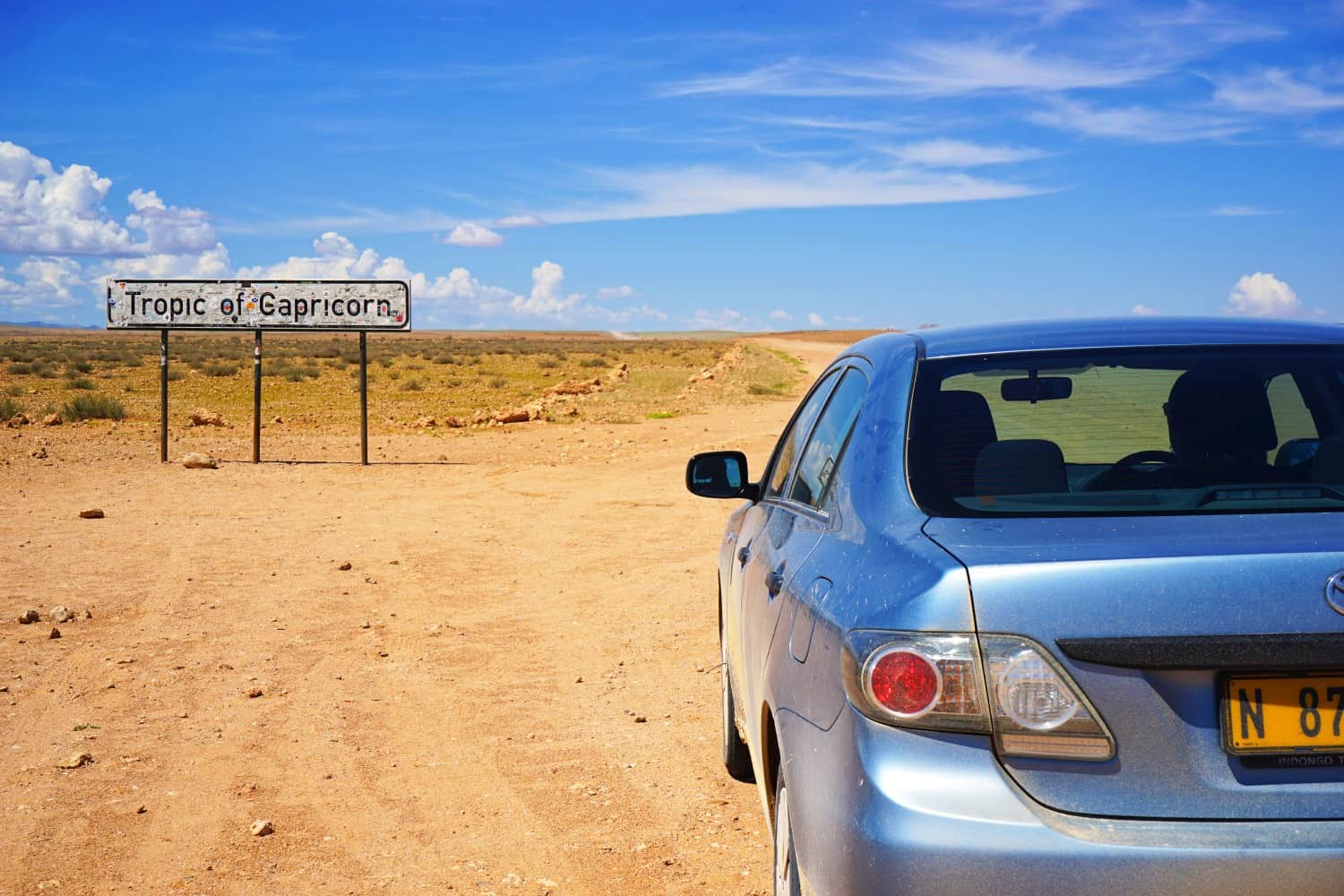
You Will Need Your Own Transport
Public transport doesn’t really exist in Namibia, so if you’re not going to take a tour, you’ll most likely need to hire a car. As for what type of car, it depends a lot on the time of year you’ll be visiting and how confident you are on gravel roads.
My Kiwi boyfriend grew up racing falling-apart cars on gravel roads in New Zealand, so he had the driving skills of a Namibian and we were happy opting for a tiny Toyota Corolla to make the trip for us. Guesthouse owners were always shocked to see us rocking up in it, but honestly, we had next to no problems with it. If you’ve got the cash, opting for a two wheel drive with higher ground clearance would be a smart idea, as part of the bottom of our car fell off on our second day of driving, thanks to all the rocks that had been flicked up into the undercarriage.
People advise to go with a 4×4, and especially if you’ll be visiting in the rainy season, but we decided against it for several reasons. First, it’s over double the price for a 4×4 (around $100 a day), second, being so high up makes the car easier to roll, and third, um, did I mention it’s expensive?
If you can’t drive? You won’t be able to visit Namibia without taking a tour or hiring a driver. You could take a bus between major destinations, but I believe you’d miss out on a lot of the wonderful lodges that make travelling in Namibia so wonderful. There are also reports of travellers rocking up in a hostel, getting together with a group of travellers, and car-sharing their way around the country, so this could be an option if you’re willing to take the risk of potentially finding nobody to travel with.
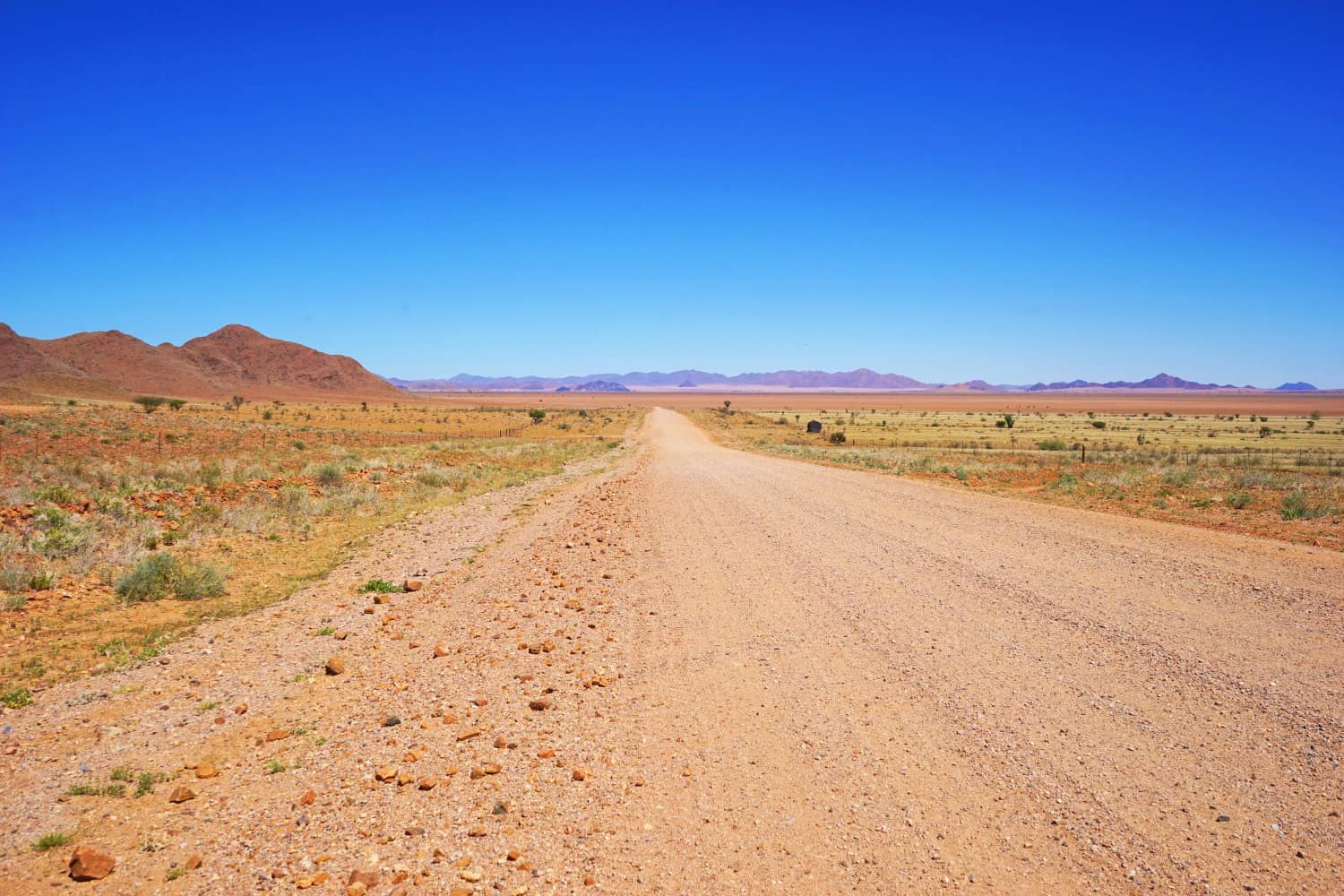
The Roads are So Bad
We drove 4000 kilometers in Namibia and probably only several hundred of them were sealed.
Yes, in Namibia, get used to urging your car over gravel, sand, rocks, and more. Because of this, travel days are long and bumpy — we rarely drove for less than six hours each day, and even listening to podcasts was a struggle over the crunching noises of driving over gravel while rocks pinged into our car
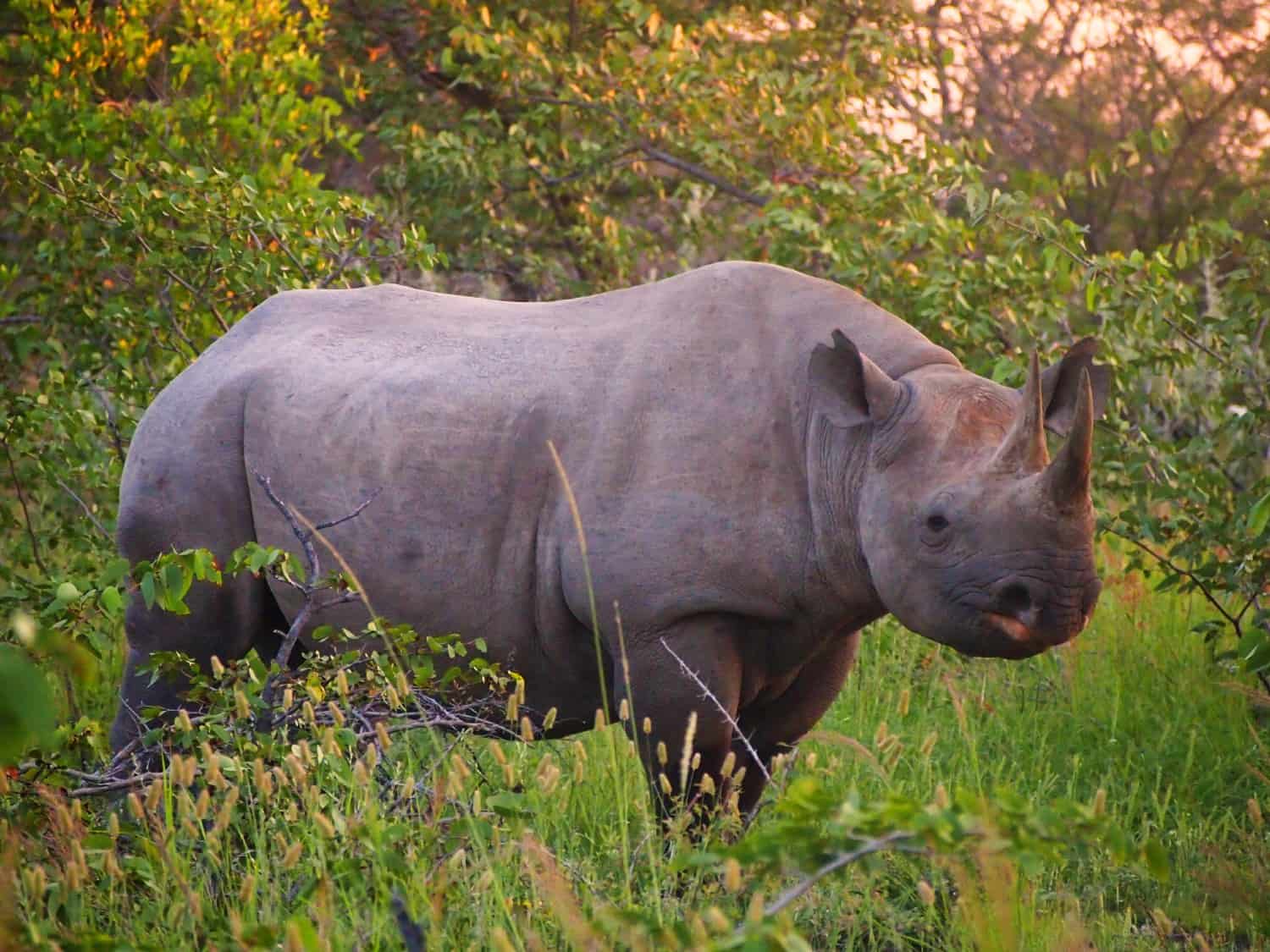
Get Yourself a SIM Card, But Expect to Rarely Use It
Getting connected is tough in Namibia, so if you work online like I do, resolve to spend most of your time on vacation.
Wi-Fi was sometimes around, was always slow, and often expensive. It’s worth getting a SIM card, though, as although we rarely got more than an EDGE signal, leaving our phones on while we were driving around usually meant we’d pick up a signal here and there to download emails.
We picked up a SIM card at Windhoek Airport upon arrival and it was super simple to do. The SIM card costs 50 US cents and 1 GB of data is a whopping $2.50. Too Many Adapters has a comprehensive guide for buying a SIM card in Namibia if you need any extra information. When it’s that cheap, there’s no reason not to get one.
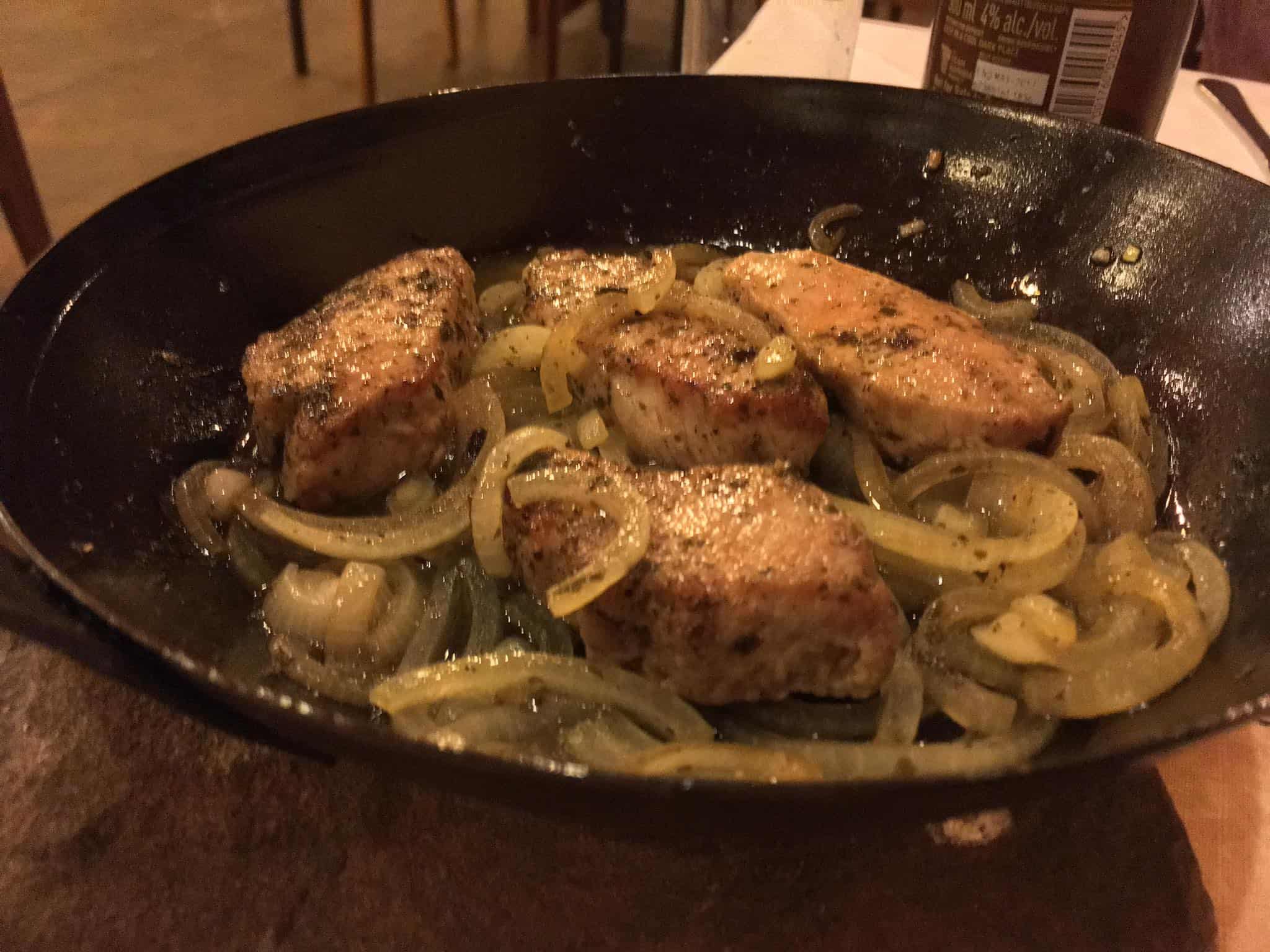
You’ll Get to Try Some Interesting Game Meat
One of my favourite aspects of eating in Namibia was getting to try so many of the delicious game meats on offer. The biggest surprise was warthog, which was delicious, but I also loved kudu, impala, oryx, zebra, and more. Most of the lodges will have some kind of unusual game meat on offer each evening, so it’ll be easy to access and you’ll soon grow used to it.
If you’re vegetarian, you’ll most likely struggle to eat super well in Namibia. Everything was very meat based at the lodges although bizarrely, Greek salads were available in basically every single restaurant, so you won’t have to go hungry. Just prepare yourself for a hell of a lot of feta cheese!
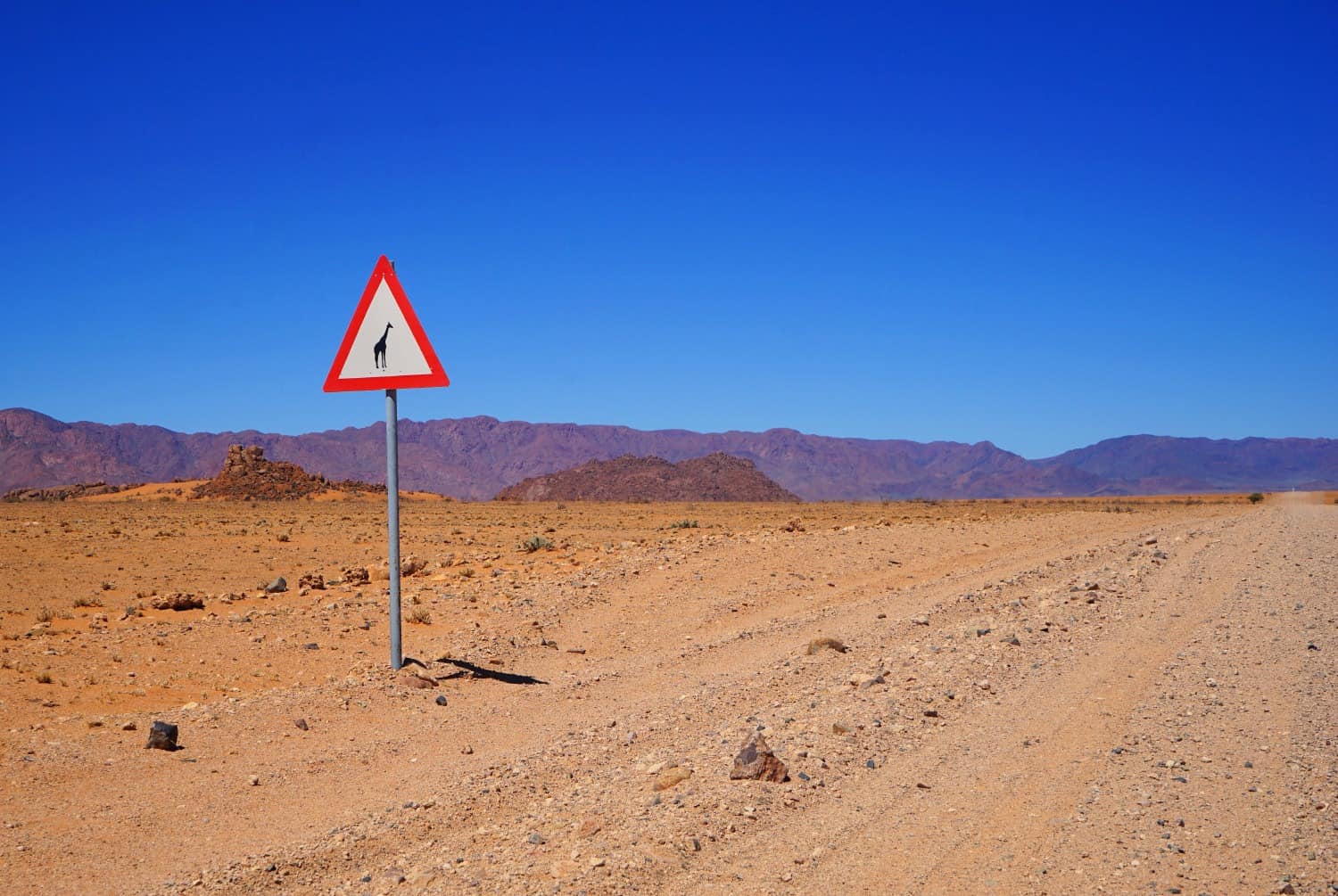
Namibia Has the Best Road Signs Ever
One of the highlights from our time in Namibia was the kickass road signs we came across while driving. The giraffe one above was one of my favourites. In addition to that, we saw signs for zebras, elephants, warthogs, and more. And even better: we actually saw some of those animals wandering around in the wild! There’s nothing quite like seeing a desert-adapted giraffe wandering through the sand.
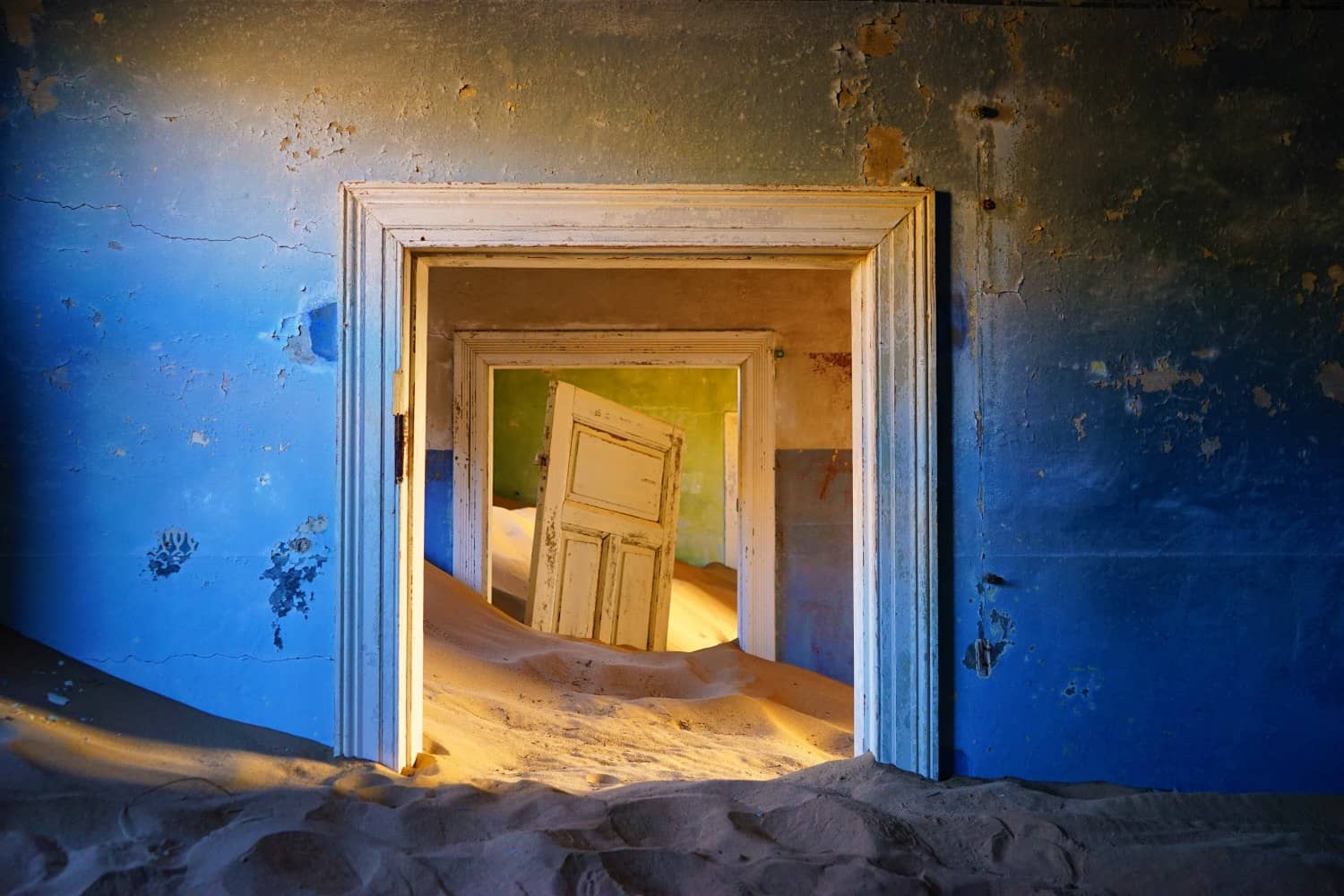
The Bradt Namibia Guide is Invaluable
If you’re planning a trip to Namibia, you need this guidebook.
Not only was it essential for planning our trip, but we used it on an hourly basis while we were in country. When it comes to Africa, Bradt guidebooks are king, so don’t even consider picking up a Lonely Planet for this part of the world; almost all of them have terrible reviews as well as outdated and too-condensed information.
Because you’ll be unlikely to have data coverage while you’re driving, and sometime even in lodges, the guidebook made our trip so much less stressful. When we wanted to figure out which animal we’d just spotted by the side of the road, the wildlife section had a photo to help us out; when we decided to stop for a lunch break in a tiny village, we could look up if there was anywhere to eat, and if so, which place was best; when we were planning our driving for the day, we could look up route recommendations and find out which attractions we might want to stop at along the way.
I don’t often recommend using guidebooks (I think I’ve only done it twice before!) because I believe you can get a lot of the information online for free, but in Namibia, this guidebook definitely helps. We struggled to find detailed information about the country both before we arrived and while we were there, so our Bradt book was 100% invaluable.
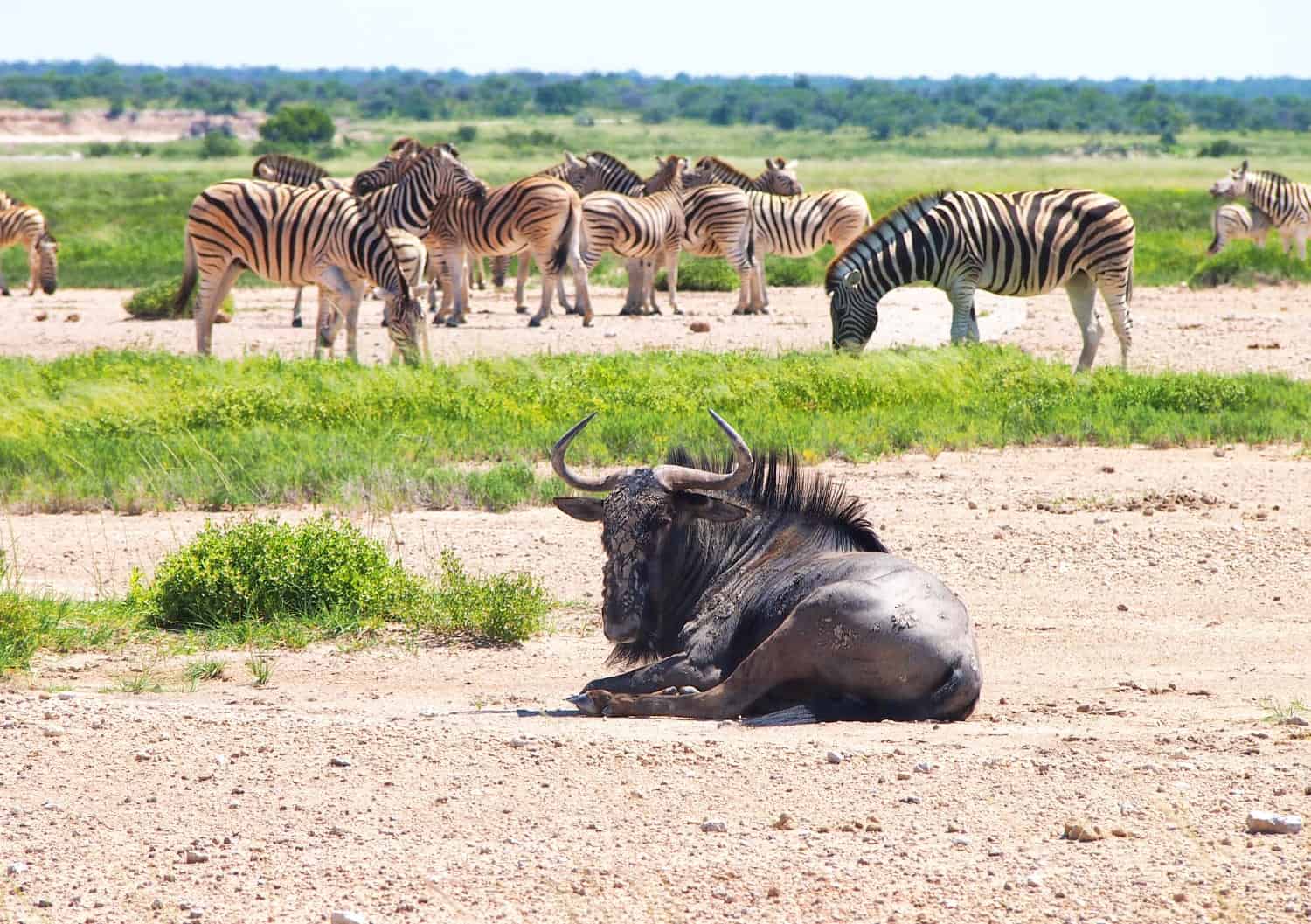
Two Weeks is the Perfect Amount of Time to Spend in the Country
I spent just under two weeks in Namibia, and feel as though I saw almost all of the highlights. If I’d had three weeks, I would have spent time at Fish River Canyon in the south, a few extra days in Damaraland, and some time exploring the Caprivi Strip in the northeast. Still, I feel as though two weeks is a good amount of time to dedicate to the country, which is refreshing as most places I visit have me feeling as though I need to explore for a minimum of three months just to start scratching at the surface.
I wanted to share my two-week itinerary here, because I feel as though I got it pretty close to perfect.
Day 1: Landed in Windhoek, picked up our rental car, and drove straight to peaceful Ovita Wildlife Restcamp. You can read about my first day in Namibia in my article, The Perfect First Day in Namibia.
Day 2: Time for wildlife! We drove north to Etosha National Park and stayed within the park at Halali. We spent the afternoon sitting at the camp’s waterhole to see if any animals emerged. You can read about my experience in Etosha National Park in the dry season: Desperately Seeking Elephants at Etosha National Park.
Day 3: For our first full day at Etosha, we drove around the eastern region of the park for almost 12 hours. We saw dozens of giraffes, zebras, and a rare black rhino, then spent the night back at Halali. It was magical.
Day 4: On day four, we opted to drive around the central parts of Etosha for the entirety of daylight hours, then switched up our accommodation to spend the night at Okaukuejo.
Day 5: For our final morning in Etosha, we decided to explore the western region of the park, then at lunchtime, drove to beautiful Vingerklip Lodge to spend the night. You can read about how incredible Vingerklip was in my article, Finding Paradise in Vingerklip: Africa’s Monument Valley.
Day 6: Day 6 brought a long drive to Swakopmund, where we spent much of the day on terrible roads. Still, getting to drive part of the Skeleton Coast was amazing, and we even got to see a shipwreck stranded off the coast. We spent the night in an Airbnb apartment.
Day 7: For day 7, we took a day trip out to nearby to Walvis Bay to see its seal colony, which is one of the largest in the world. You can read about this wonderful experience in the article, Seals, Swakopmund, and the Skeleton Coast. Again, we spent the night in our Airbnb apartment.
Day 8: We spent this day relaxing and exploring Swakopmund. You could use this day to get your adventure on if you wanted, as Swakopmund is the adventure capital of the world. You could try your hand at quad biking on the nearby sand dunes, for example. Once more, we spent the night in an Airbnb apartment.
Day 9: The following day, we drove to Sesriem and spent our afternoon climbing Dune 45. I highly recommend doing this, as we practically had the entire park all to ourselves. We slept at Sesriem Desert Camp, which was magnificent.
Day 10: We got up at sunrise to enter the park, climb Big Daddy sand dune, and explore Deadvlei. This day was spectacular and you can read about the experience in the article, Climbing Big Daddy: An African Travel Highlight. That afternoon, we drove south to Betta Camp to spend the night.
Day 11: The following morning, we drove down to Luderitz. We spent the afternoon exploring this adorable town and spotting pelicans as we drove around the areas just outside of Luderitz. It was a fairly relaxed day after all of the movement, and we spent the night at Kairos B&B.
Day 12: We saved the best for last, because for day 12, we drove to Kolmanskop at sunrise and and had the entire place to ourselves. Kolmanskop is an old mining town that has since been abandoned and is now being taken over by the desert. It was incredible and we spent a full three hours taking photos. I wrote about it in-depth in the article, Exploring Kolmanskop: Namibia’s Ghost Town in the Desert. In the afternoon, we drove to Maltahohe Hotel to break up the long journey back to Windhoek.
Day 13: Final day! Sad face. We spent this day driving from Maltahohe to Windhoek and left Namibia in awe of how much the country has to offer.
This was one of the best trips of my life and I highly recommend putting together a similar itinerary if you’re planning a trip to Namibia.
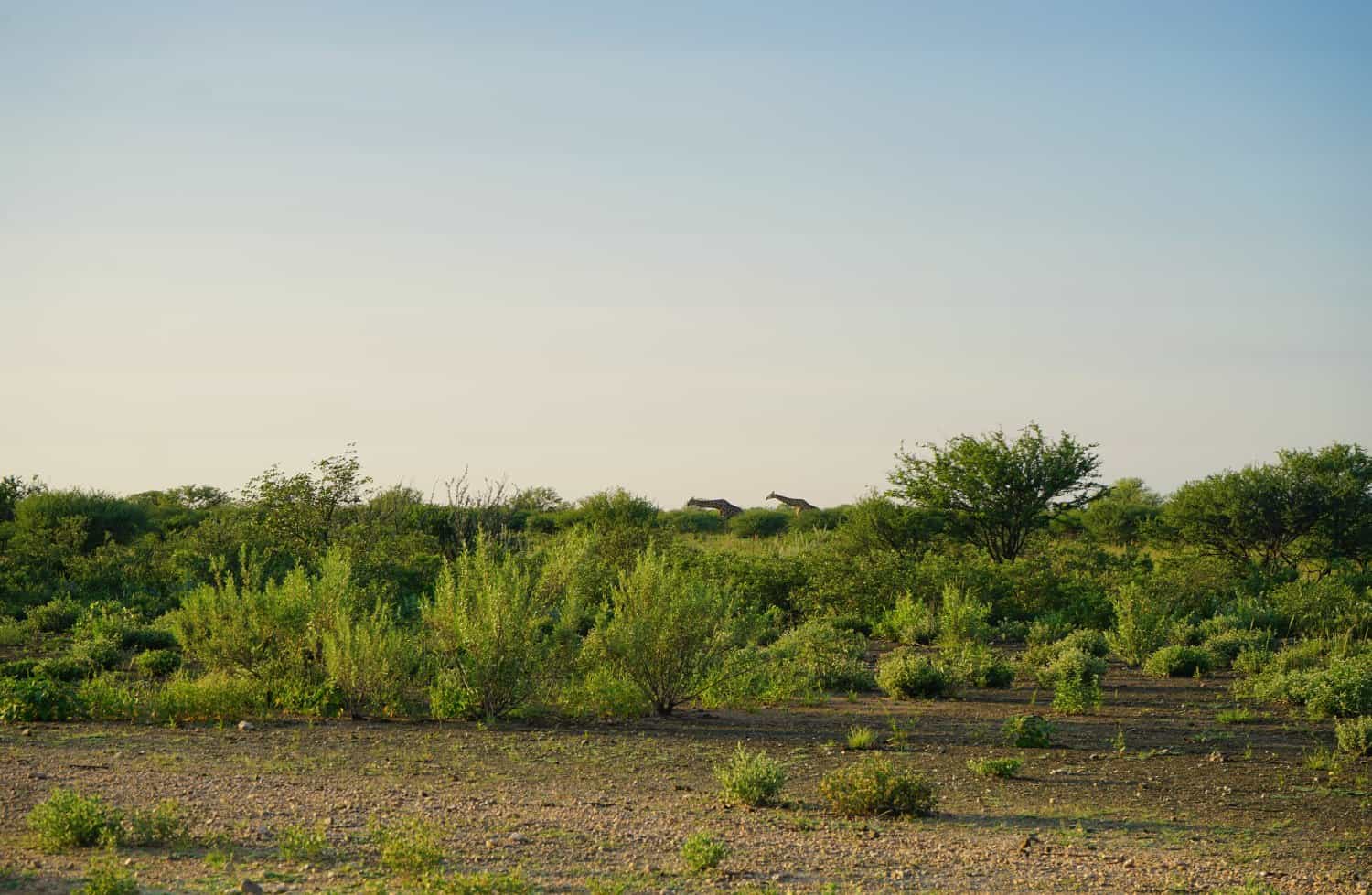
Yeah, You Should Definitely Get a Zoom Lens
The biggest regret of my trip? Not splashing out on a zoom lens for my camera and then getting uniformly awful photos in Etosha.
I ventured into Namibia with my Sony 28-70mm lens and while it was absolutely fantastic for landscape photos, it was nowhere near good enough for the wildlife. Had my boyfriend not packed his 80-300mm lens, I would have had close to zero photos of any animals. Because we were in Namibia in the rainy season (more on that below), the animals at Etosha were hiding in dense grass and hard to spot, so it was rare for us to get up close to them.
If you’re going to Namibia and will be hitting up Etosha while you’re there, make sure you’ve got a decent zoom lens for the trip.
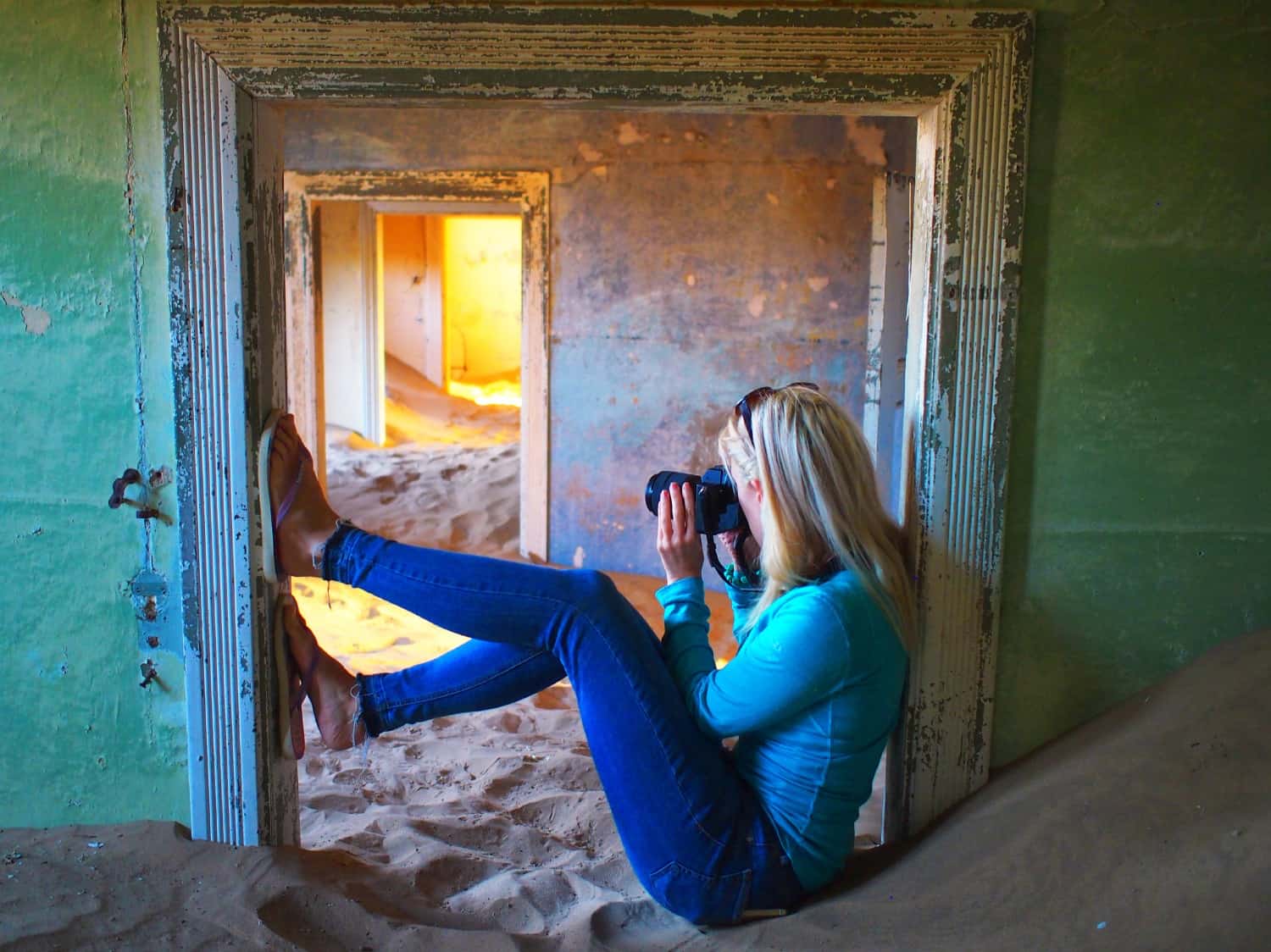
Get Yourself Some Excellent Travel Insurance
You know I’ll always yell at you if you’re dumb enough to skip out on travel insurance, but in Namibia, it’s an essential.
Why? Because Namibia has the highest car-accident death rate in the world, with 45 people killed on the road for every 100,000 citizens. On top of that, malaria hangs out in the northern parts of the country, and there are several other awful-sounding tropical diseases you definitely don’t want to contract.
Travel insurance will cover you if your flight is cancelled and you need to book a new one, if your luggage gets lost and you need to replace your belongings, if you suddenly get struck down by appendicitis and have to be hospitalised, or discover a family member has died and you need to get home immediately. If you fall seriously ill, your insurance will cover the costs to fly you home to receive medical treatment.
I use SafetyWing as my travel insurance provider, and recommend them for trips to Namibia. Firstly, they’re one of the few companies out there who will actually cover you if you contract COVID-19. On top of that, they provide worldwide coverage, don’t require you to have a return ticket, and even allow you to buy coverage after you’ve left home. If you’re on a long-term trip, you can pay monthly instead of up-front, and can cancel at any time. Finally, they’re way cheaper than the competition, and have a clear, easy-to-understand pricing structure, which is always appreciated.
With SafetyWing, you’ll pay $1.50 a day for travel insurance.
On top of standard travel insurance, you’ll also want to make sure you get some of the best car insurance money can buy. Most tourists get a flat tyre in Namibia at some point at a minimum (we got one roughly an hour from the airport on our final day) and replacing them/repairing the rental car can be pricey. We rented our car through rentalcars.com, bought their insurance, and they refunded us for all of our car disaster expenses in Namibia.
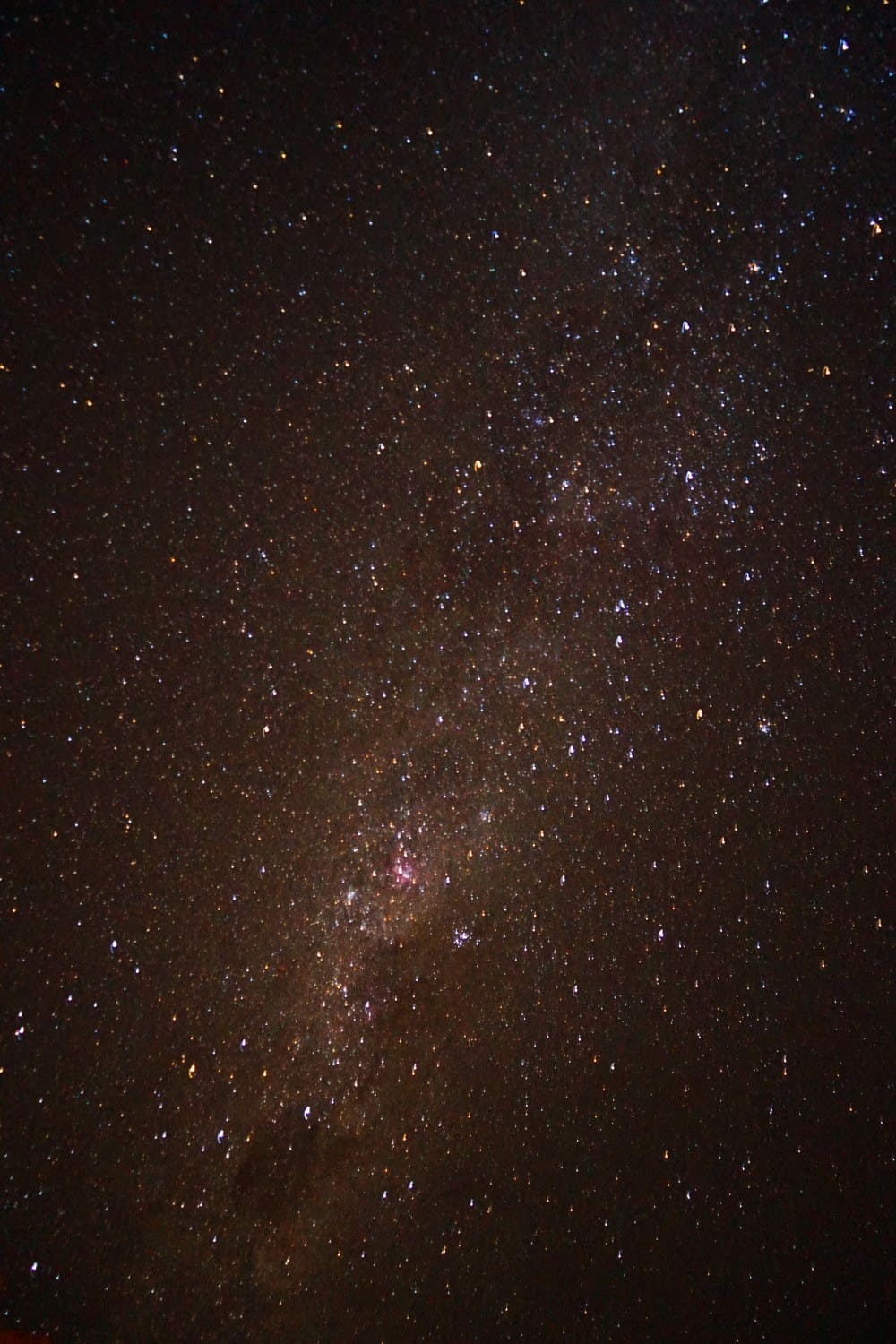
You’ll Never Have Seen This Many Stars Before
Namibia is home to some of the darkest skies in the world, and I couldn’t believe how magical the night sky was. With the exception of the cities we stayed in, we fell asleep every night with the Milky Way twinkling above our heads. And with the lack of light pollution in the country, you didn’t even need to wait for your eyes to adjust.
If you’re all about stars, this is one destination not to miss.
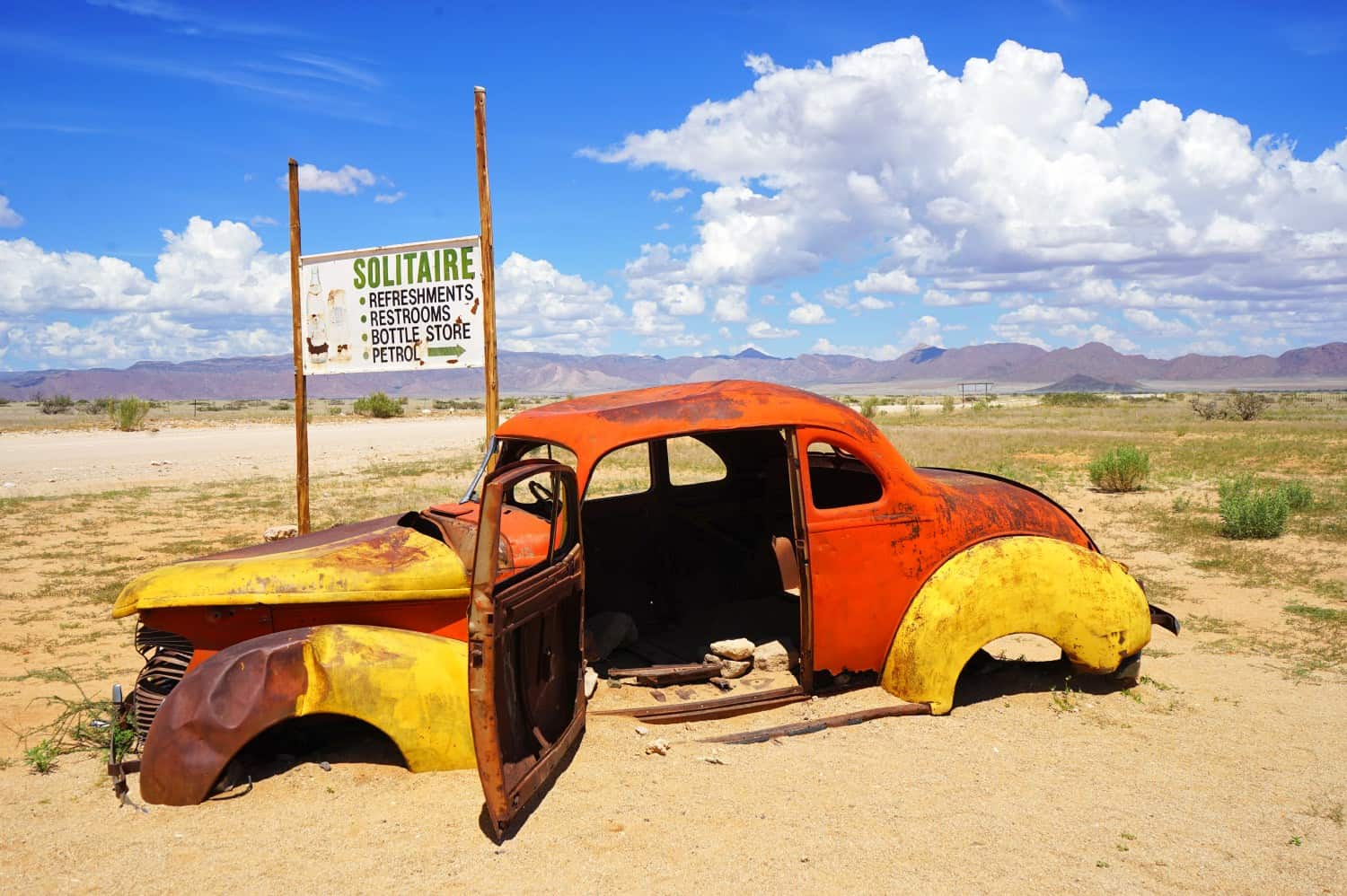
I Loved Visiting During the Low Season
Well, low-ish season. We hit up Namibia in March, which is typically the final month of the rainy season.
We experienced just one hour of rain and the rest of our trip was full of gloriously blue skies. There were fewer tourists, prices for accommodation were almost half what they’d be in high season, and the weather wasn’t bad at all. I highly recommend considering a shoulder-season visit because of this.
Surely there has to be a downside? Yep. We struggled to see anything at Etosha. There are thirty-odd waterholes inside the park and during the dry season, they usually look like this:
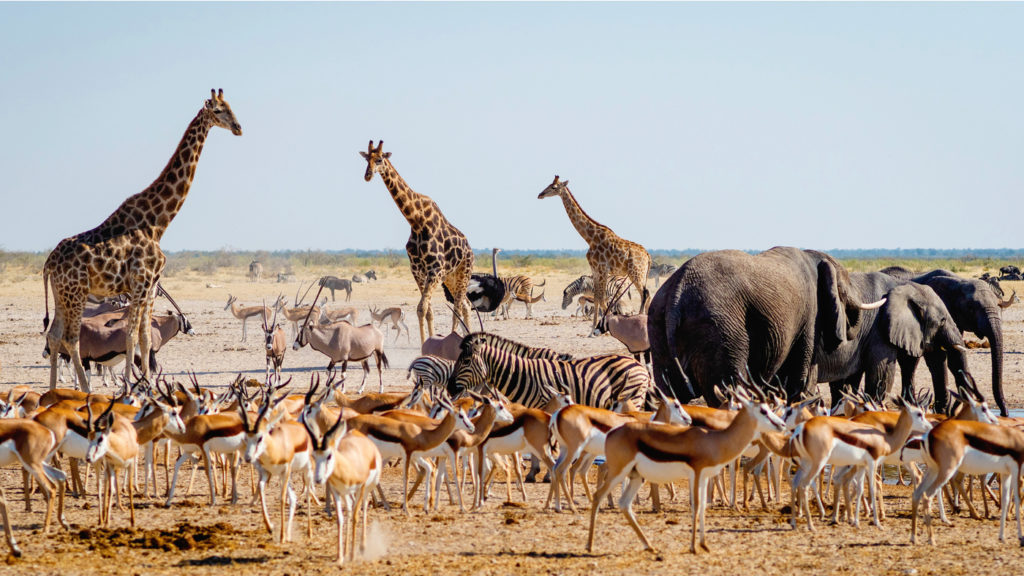
Well, over three whole days of 12-hour drives, Dave and I saw literally nothing at any of the waterholes. Our waterholes looked like this:
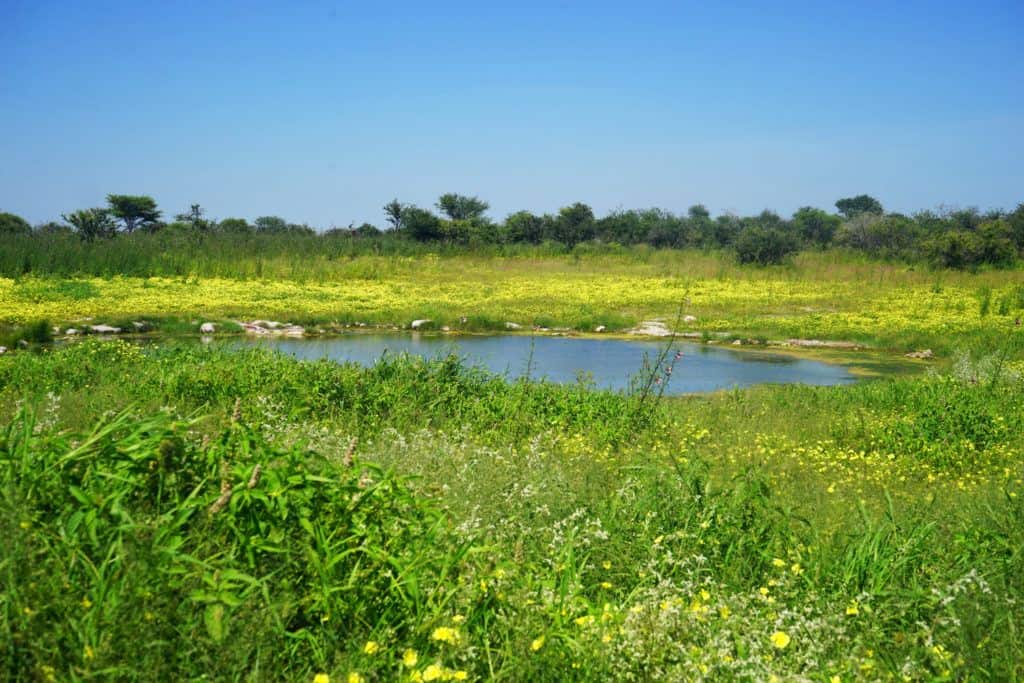
We didn’t even see a bird.
The problem is: during the rainy season, there’s no reason for the animals to go to the waterholes because there’s water everywhere. And being on the tail end of that meant that instead we had to drive around in search of animals in the bushes. We didn’t come up empty handed, though: while we didn’t see a single elephant, we managed to see three black rhinos (super rare) and countless giraffes (my favourite animal).
It was funny, though, to have seen so many spectacular photos of Etosha before arriving, then to end up spending 90% of our time driving from deserted waterhole to deserted waterhole.
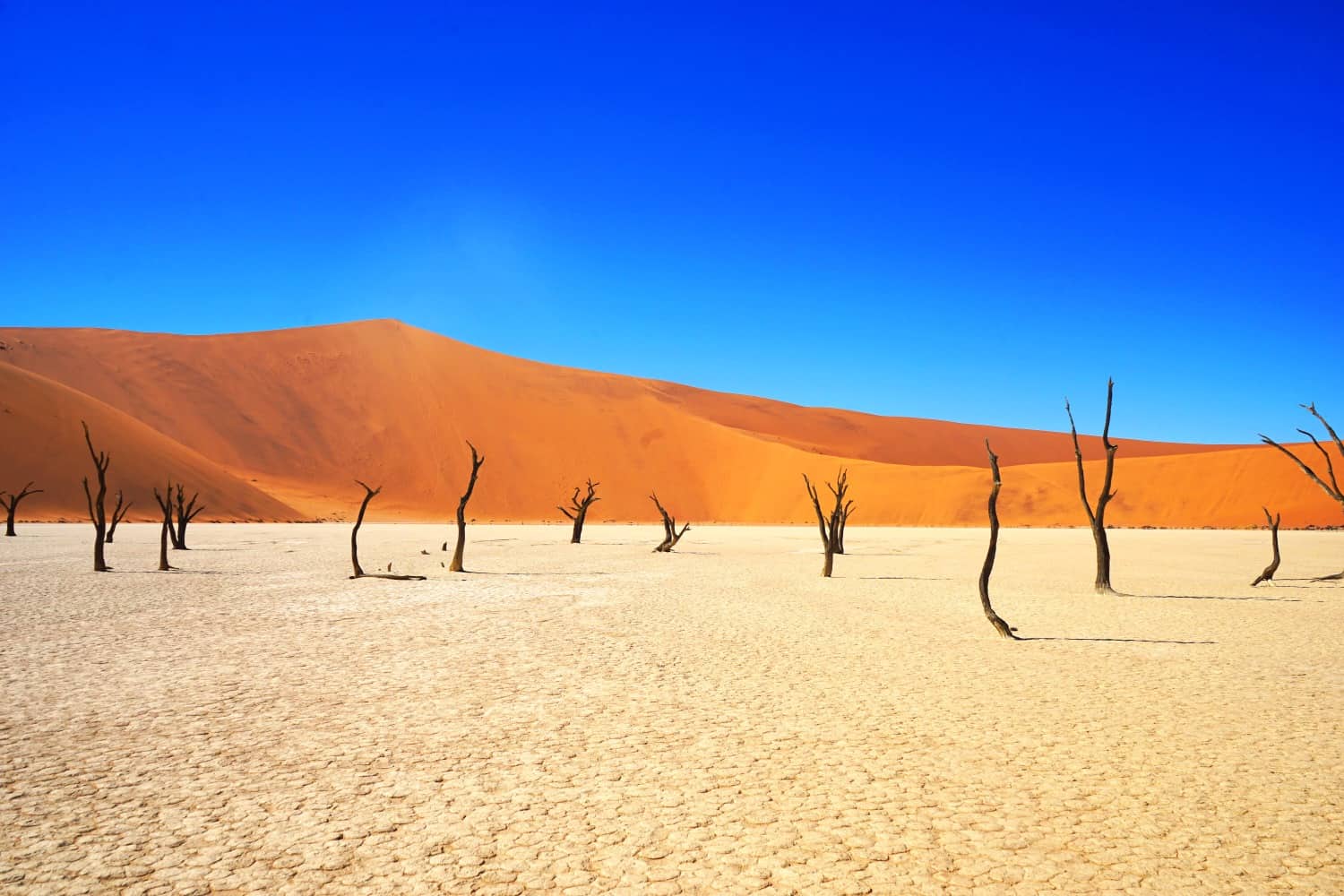
Have I Convinced You to Visit Yet?
I’m not exaggerating when I say travelling in Namibia is one of the best experiences of my life, and I can’t wait to start sharing every incredible minute of my time there. Next up: a detailed itinerary guide followed by dozens of stories to convince you to add Namibia to your bucket list! :-)
Have you been to Namibia before? Would you like to visit?
Related Articles on Namibia
💰 The Cost of Travel in Namibia: My Detailed Budget Breakdown
🦛 The Perfect First Day in Namibia
🐘 Desperately Seeking Elephants in Etosha National Park
🏜 Finding Paradise in Vingerklip: Africa’s Monument Valley
🦭 Seals, Swakopmund, and the Skeleton Coast
🥾 Climbing Big Daddy: An African Travel Highlight
🏚 Exploring Kolmanskop: Namibia’s Ghost Town in the Desert

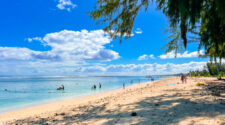
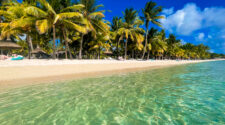
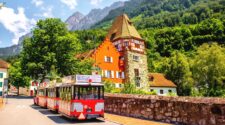
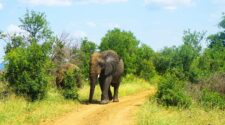
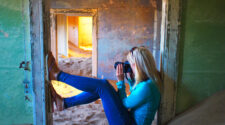
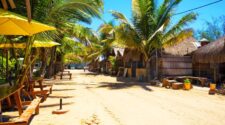
I have never heard a bad thing about Namibia, and though we haven’t hit Sub-Saharan Africa, it would definitely be atop our list – maybe alongside Botswana? And on top of all you’ve listed, I’ve also heard that they have some decent German beer there since it was a German colony for a while. Any truth to that rumor?
There was *amazing* beer in Namibia! I’ve heard Botswana is pretty expensive and really tough to visit independently, but it’s very high on my list nonetheless. I know you guys would definitely love Namibia though!
Windhoek Lager (best beer in Africa)
True that!
Have you convinced me? Actually you have, I would have never thought of visiting there but it looks super amazing and peaceful! It sort of reminds me of Arizona. It sounds like heaven compared to NYC where I am currently at!
-Rachel @ Backcountry Petite
Score! I actually commented several times to Dave that I felt as though we were driving through the U.S. Southwest a lot of the time.
Great post, Lauren! I love all your pictures – especially the one of the night sky and the doors with the sand. It looks SO different than the places I’ve visited in Africa (Uganda and Zanzibar) that I’m very intrigued.
I think you’d love Namibia, Ashley! It’s very different to the other African countries I’ve been to, as well — so arid and empty!
Wow your pictures are absolutely stunning! Namibia has been calling my name lately but as you said it’s so darn expensive. Hopefully one of these days I’ll save up enough to see it. Did you find the food expensive even at local restaurants?
The problem was there often wasn’t any local restaurants. You’ll stay at lodges where the nearest town is several hours away, so you usually have to eat where you’re staying. In Swakopmund and Luderitz, food was slightly cheaper at around $8-10 per meal.
Wow Namibia looks wonderful! Thanks for writing this complete guide.
Good to know it is safe.
x
It really is the perfect introduction to travel in Africa :-)
Yep! I’m convinced! All I knew of Namibia was the rockin’ sand dunes. But with all this extra awesomeness (aside from the lodging prices) sound right up my alley! What city do you fly into?
Windhoek!
I’ve heard of Namibia before, I’m surprised so many others haven’t.
It looks wonderful! You have 100% convinced me!
Yay!
I was there in march and I loved it. I highly recommend it to every one. It’s very safe!
Best regards!
Glad to hear you enjoyed it as well, Rui! :-)
You have definitely convinced me to go to Namibia. I had never thought of it before, but I think I will have to look into a bit now. Look forward to reading more posts about your trip.
I’m so happy to hear that! It’s definitely worth the visit :-)
I enjoyed the read! Amazing photos. Thanks for the tips <3
Glad you enjoyed it, Nadia!
I’ve been to Namibia on honey moon in 1995. Afraid to go back and see it changed. Apart from the occasion, it has been the most fabulous trip I have made. Did you miss the Skeleton coast?
We saw a small part of it while we were driving down to Swakopmund. Managed to see one shipwreck on the beach, but didn’t have enough time to get anywhere else. I would be interested to know if it has changed — it didn’t feel like the type of place that was changing quickly, but that’s totally just me guessing!
Namibia was my first ever solo trip abroad (around 8 years ago) and it was incredible. Yes the driving days are long but it is definitely worth it. The landscapes and hiking are fantastic, like nowhere else I’ve been, and the wildlife is so diverse. Other than South Africa I don’t know what country you can see penguins at one end and all the traditional safari animals at the other end. Looking forward to reading more posts to relive my trip/see how it’s changed.
Totally agree with you, Laura! I was surprised by how diverse the landscapes and wildlife were, and how empty the country the feels.
Looks and sounds like a great trip. Thanks!
It was amazing :-)
Wow, it really looks amazing. Must have been an incredible experience visiting the country.
As I said, the best trip I’ve ever taken. I loved every second I spent in the country :-)
I have to say Namibia looks amazing – it’s never particularly been on my radar, but it definitely is now! Looking forward to more posts on your time there. :)
I’m so happy to hear that, Clazz! It’s one of the coolest countries I’ve ever been to.
And great for children too. The number of ‘cute’ animals identified for airlifting to a proposed zoo in our back garden was extensive! Animals are everywhere: on the beach, by the side of the road, wandering around your lodge or tent. The whole family loved every bit of the holiday.
Ooh, I can imagine! I was filled with childlike excitement over every animal I spotted in Namibia.
I haven’t been before but you have me just about convinced! I’ve heard that the oysters from Namibia are something else as well.
Yes! Oh my god, I had the best oysters of my LIFE in Namibia!
Yep, I’m convinced! Everything looked amazing! Where did you flew from and how much did it cost you?
I flew from Portugal for $250 return with TAAG.
To be honest, this is the first time I’ve heard of Namibia. Probably because I’m from the other side of the globe.. or maybe I need to travel more! Nevertheless, thank you for this post! Very inspiring!
Well, you’re definitely not alone! But hopefully it convinced you to try to make it there one day :-)
Awesome photography. Thank you for sharing these amazing pictures and your experience in Namibia. I can’t wait to visit.
This place looks so stunning. I am one of those who had never heard of Namibia…..glad you shared this post. Thanks!
Glad you enjoyed it, Alex!
Namibia is terrific. I have been there only once but I still remember its beauty…yes it does gives you a lot of pocket pinch but then it’s worth it.
100% worth it!
I’m really excited to delve into the rest of your blog posts about Namibia. I have to confess I knew nothing about it before you visited but it looks like such an incredible country. Loved this introduction into what it’s like the travel there.
Happy to hear you enjoyed the post! Namibia is so underrated!
Namibia has been on my bucket list since I first set foot in Africa, After seeing your images and reading your blog I need to get there! Perhaps it will be the destination booked when I visit Africa again rather than the Safaris I did in 2010 or the Gorilla trekking in Rwanda! Great post!
I highly recommend it! :-)
Good to know, where would you suggest other than sousevlei and kolmanscop?
Walvis Bay, Vingerklip, and Etosha!
Honestly I don’t think it’s that expensive in the grand scheme of things. Sure, it’s not backpacking on a tight budget, but the prices aren’t that bad compared to the rest of the world. And if you compare what you get for the money with what you’d pay in somewhere like Australia, it seems like you definitely got your moneys worth.
That’s true. I guess the only problem is that there isn’t a super easy way to visit on a budget without missing out on a ton of awesome stuff. Most countries around the world will have hostels in most destinations. In Namibia, there isn’t really that option if you want to get outside of the cities and towns. But I agree: if you usually spend this amount of money in other countries as you travel, you’d feel as though you got a lot for your money in Namibia.
If Namibia is ‘Africa for beginners’, as is often said, what a wonderful place to start. Stunning photos, especially the view from the Sesriem Desert Camp. It’s perfect.
Absolutely! It was so easy to visit, and probably my favourite country I’ve now been to in Africa.
Fantastic post about a country I don’t know a lot about. Do they have a dress code in Namibia at all? Do women have to cover up while travelling in the country?
Not really. I would cover up my shoulders sometimes, but usually wandered around in a t-shirt and shorts. Almost all of the tourists I saw in the country were wearing shorts and t-shirts.
Wow it does sound amazing, how many days was this trip? My hubby turns 60 in October, after much nagging he has chosen Namibia.
Great decision! We spent 12 days in the country. Ovita for 1 night – Etosha for three nights – Vingerklip for a night – Swakopmund for 3 nights – Betta Camp for 1 night – Sesriem for 1 night – Luderitz for 1 night – Maltahohe for 1 night – drive to Windhoek and out!
Dear Lauren
I am a Namibian, who often enjoys reading visitor’s blogs about my beloved country. It is always interesting to see Namibia through the eyes of other’s…..your photos and posts have been great fun to read. Thanks for the free advertisement……..might I add, Namibia is quite clean, it helps to have a small population density. Nonetheless, we do take pride in keeping it clean, hope you noticed that! Enjoy your travels, hope you make your way back here for an extended journey and with many other wide-eyed visitors in tow! P.S. the dust gets to me too!!! Regards Indileni
Yes, I definitely noticed that! I’m so glad to hear you’ve been enjoying my posts — it’s been a fun country to write about :-)
Hi! Looks like it was a great trip to Namibia. In search of things about this country I found your article. I am interested to go this year there. Can you tell me if you took pills for malaria or vaccine for yellow fever. Thank you
I took malaria pills for my time in Etosha. No yellow fever vaccine — they don’t have it in Namibia.
Hi Lauren,
I’m currently finding out as much as I can about Namibia from books and the net, which is where I stumbled on your blog, which I’ve got to say, is excellent. I’d really like to hire a car and go camping, probably with a roof top tent, and only in campsites. My main concern is waking up in the middle of the night, wandering out to go to the toilet and having a close encounter with wild animals. Any advice?
Thanks,
Tony
It’s not my area of expertise, as I didn’t camp when I was in Namibia, but I’d imagine that you’d be okay in campsites. The animals are very spread out across the country, so it was extremely rare to see them while we were staying anywhere.
Your pictures are so amazing that I want to cry. This is on my list of possibilities for next summer. Thanks for the information!
Ah, thank you! It was easy to take great photos of such a beautiful country :-)
Thanks for a great blog series on Namibia! Great information and very helpful. I’m planning on doing a big road trip in the fall of 2018 and am really looking forward to it!
Sweet! You’ll have an amazing time, Rand :-)
I would like to drive myself through Namibia as I like the independence. However, I know nothing about mechanics and shamefully I’ve never been able to change a flat tire (I’ve tried but I’ve never had the strength to get the bolts off.). So is a tour package the only way to go for me?
Thanks
You could look into hiring a guide to drive you. That’ll be cheaper than a tour and then you won’t have to worry about tackling the bad roads yourself.
Greetings for Oranjemund,Namibia Lauren,
Thanks so much for highlighting our beautiful country, I see you made Luderitz. Next visit head down to the deep South , Oranjemund was a forbidden town since 1936 due to the vast diamond deposits and only opened to the public towards the end of 2017. We walk amongst the Gemsboks in our streets down here. On the way to the beach last night, I had to stop and shout out the window at all the wild springboks hogging the road. They did not even scatter, but rather stood there giving me the evil eye…. Anyhow, Next time if you make it down here, give us a shout!
Thanks again.
Ooooh, I would love to go! Sounds amazing :-)
Awesome read! Namibia is really one of the those countries people don’t seem to know about unless they’ve travelled to Southern Africa, or actually come from the area, like myself. ;)
Well, South Africa, but I spent a good few years in that amazing country.
Atleast South Africa gives you an idea of where it is directly in the name!
The endless nothingness on the roads is amazing, especially when you drive for hours without seeing a soul.
The amount of wildlife is another incredible thing about Namibia, unfortunate time to travel there in March, whilst you got to experience Nam at its greenest (or there abouts), the animals had plenty of watering holes to choose from, which is a pain when you want to see them ;)
For travelling during the low season, guided tours really are worth it, as the guides all communicate with one another and give each other live information about animal sightings etc. They can be rather pricey though :/
For anyone making a short trip, Erindi Private Game Reserve is a good stop, especially during the low season, the park is one of the largest privately owned reserves, but it is also tiny compared to Etosha, with a lot of the animals you could see in Etosha, the guides are very informed and make a real effort to get you to the animals you want to see (and the tours aren’t too expensive), it’s probably the most worthwhile 1 or 2 nights stay for anyone looking into some wildlife during the low season.
Otherwise, October/November is probably the best time to visit Etosha.
So I think the real question is, when are you visiting again? ;)
Amazing! Thank you so much for sharing! I’d love to get back within the next couple of years — especially because I need to have a better Etosha experience!
Awesome pictures that reminds me of my journey to Namibia although it’s been almost 6 years meanwhile… would go there again any time.
I’ve also published some of my black & white pictures in a Blurb photo book.
Maybe that would be an option for you as well? :)
For all the would-be tourists out there: I am a Namibian and love my country with all my heart! The reasons for my addiction to Namibia`s wild open spaces, spectacular scenery and incredible wildlife are numerous, but the ones standing out for me is the silence (you hear yourself breathe), the fact that you can stop anywhere alongside the road for a cuppa or to pitch your tent without fear of any danger (be it human or nature) and above all….the solitude! Take your 4×4 for an excursion into Damaraland and the Kaokoveld and have your soul completely rejuvenated! The friendly and helpful locals are just the icing on the cake – Namibia for ever. Hope to host you guys soon in our beatyfull paradise – so peacefull, quiet and serene.
Thank you for this post, Lauren! My grandparents lived in Namibia and I was lucky enough to visit them when I was 16. We stayed for 2 months and did a little bit of traveling. Now, 20 years later, I’ve been dreaming of a trip to Namibia with my 14 & 15 yr old daughters and decided to do a little research to see if it was still as empty and beautiful as I remember… From your post it looks like it’s still the perfect place to visit and I’m looking forward to planning a visit next summer. Thanks again.
I just came back from South Africa and that has made me want to visit Namibia. Your blog has now convinced me, although it seems like the dry season is best for animals. What’s the best way to get to Namibia? Is it best to fly to Cape Town and then catch a flight to Windhoek?
Either that or via Angola with TAAG Angola Air — they have some seriously cheap flight deals from Lisbon.
So glad to have come across this overview…
I nabbed a cheap ticket to Cape Town for May of 2019 and am planning on a 3-week Namibia road trip as the focus of my visit.
Looking forward to digging into the accompanying posts soon!
You’re going to have the best trip ever, Chris! Namibia is one of my favourite countries in the world :-)
I recall learning about the Welwitschia plant of Namibia while in school. Recently, an opportunity to travel to Namibia came up and I actually might be able to visit this intriguing country. This post got me even more excited. And the photos are crazy beautiful. thank you!
Oh, wow! I hope you do get to visit, Misael! It’s such a beautiful country :-)
I’m a bit worried that we haven’t booked enough in between stops for our upcoming trip! I have only allowed one day to get from Walvis Bay to Sesriem and one day between all our other destinations. Hopefully our experience of travelling in the Australian outback will help us in Namibia – we have driven over 1,000 sand dunes in our Simpson Desert and tackled corrugated roads like the Gibb River in the Kimberley. We have hired a 4×4 and will be camping – my only fear is meeting a lion in the shower when we do a side trip to Rooiputs in Botswana. I might just use baby wipes for those 2 days!
Hi Lauren,
I have just come across this blog – and just WOW! Namibia looks amazing and the thorough description and itinerary is superb. I’ve recently watched Romesh Ranganathan’s Misadventures where he went to Ethiopia which is another astounding yet non touristic place that people would not think of visiting.
I have travelled around the majority of Morocco in a 4×4 over a month and that wasn’t enough time. I’ve travelled all around Australia and NZ over a year – in the outback, NT and WA which have some similarities in terms of plenty of driving and not seeing anyone else for miles and plenty of unsealed road.
Both in Aus and Morocco we didn’t seem to have problems with flat tyres but we were deflating / inflating when appropriate. Crazy how you did the trip in a Toyota Corolla.
Sorry for waffling on, I get excited with planning new trips – especially when you say you only need 2 weeks! Anyway just a few questions if you still remember from your time there
– How much did you roughly spend during the two weeks, excluding flights, travel insurance, vaccinations. Although these details would be handy to know.
– What was the heat like, was it still cool (ish) after rainy season? And were there places to buy / stock up on bottled water or did you kind of need to ration to make it to the next lodge or gas station.
– What was the price of gas roughly?
– Apart from flat tyres, did you have any major problems or was there anything you were worried out before you went or whilst you were travelling through the country – malaria, insects, the heat etc?
Maybe I need to check out your travel anxiety course again and stop asking questions and just dive right in. It’s been almost a year since I got back from Aus, so I’m gagging to travel properly again but still anxious about Africa. Thank you!
Your website/blog is a true gift. I stumbled on it while planning my trip to hike Hadrians wall and went exploring to see if you had been to Namibia. BINGO. You have an itinerary and everything I need to know for both trips. I can’t tell you how excited and fortunate I feel to have found this site.
Thank you!!!
Hi Lauren…We are starting our “Journey Down That Path” yearlong family trip around the world July 1st. Our first month we are renting a 4×4 and touring Namibia.. It’s been on my bucket list since I gave up an opportunity to do Peace Corps work there in the early 90s. We can’t wait to experience all these sites. Thanks for your inspiration!
Hi Lauren. We are travelling to Namibia for the first time in October. I’m just wondering about travel injections. We will be getting Typhoid, Hepatitis A and advised to take Malarone anti malaria tablets as we are visiting Etosha National Park and staying outside of it at El Dorado Guest Farm. Is it necessary to get the rabies vaccine? There are a lot of dogs at this farm. Maybe I’m just being over cautious. Any advice would be greatly appreciated for first timers. Itinerary is arrive in Windhoek, drive to El Dorado Guest Farm in the morning, spend two nights there and then head southwards. Many thanks
I wouldn’t bother with the rabies vaccine. It’s highly unlikely you’ll even be bitten by a dog, and I can’t imagine the owners would be keeping rabid dogs on their property, either! You can tell when a dog has rabies, so the owners wouldn’t just let them hang around their other animals and endanger them and themselves :-)
I don’t see how you would get bitten because I doubt anyone would allow wild dogs roam free on commercial property. You would be fine, don’t just overthink it.
Great tips! In retrospect, would you have splurged on a bigger car better suited for the roads, are was the struggle with the bad roads in your little car worth it? And did you get any flats or have other car troubles?
There are definite pros and cons for each option. If we’d had a bigger car, there’d have been a greater chance of it rolling on the bad roads, for example, and they can be much more expensive to rent while also using more fuel. We really didn’t have too many problems with our car, so would stick with what we drove. We had one flat tyre, right at the end of our trip (on the first bit of paved road we’d had in a fortnight, haha), but it was no big deal. A local actually pulled over within two minutes of us stopping and changed the tyre for us!
If you don’t have much experience on gravel roads, maybe go for the 4WD option, but we didn’t really have any major problems with our Corolla. And the rental cars are definitely well-equipped for any flats you might have, with a spare tyre and a jack.
It just looks like the most beautiful country in the world! I can see why you loved it so much. I bet they’re probably doing ok with COVID with their population all spread out!
I spent 4 months in this beautiful country; 25 years ago. I would highly recommend Waterberg plateau, you would struggle to find a more stunning place on the planet. I will never ever forget this country, I have travelled around the world and visited some fantastic countries, and I can say without a shadow of a doubt, Namibia is by far the country that I will never forget.
The stars, the sunset and sunrise, the scenery and the tranquility are my cherished memories.
Namibia has been on my wishlist for several years. You don’t mention renting the jeeps with tents attached. Are you familiar with this option?
Greetings from Canada, perhaps i missed this ,but what would you pack?
i see you in jeans in pictures, certainly I dont need safari attire? off to Namibia in September.
Nope, no need for safari attire; I just wore my normal clothes that I wear at home! Jeans and a t-shirt, shorts and a t-shirt, a hoodie in the evening, etc. Everybody else that I saw was just wearing typical clothes, too — very casual. There’s no need to try to camouflage yourself from the animals in Etosha as it’s usually a dusty plain so everything stands out against it!
Hi Lauren,
Great article, thanks so much. I was wondering if you booked your hotels before you left for Namibia or just booked as you went during your trip. I’ll probably just follow your itinerary, but I wasn’t sure if I should book ahead. Planning to go in May or June. Thanks, Peter.
I booked in advance. I don’t think any of the places I stayed in were fully booked but I was there during the low season. If at all possible I would recommend booking in advance, though! In some parts of Namibia, the accommodation is spread so sparsely across the country that if you turned up somewhere and couldn’t get a room, you might have to drive for an hour or two to get to the nearest property!